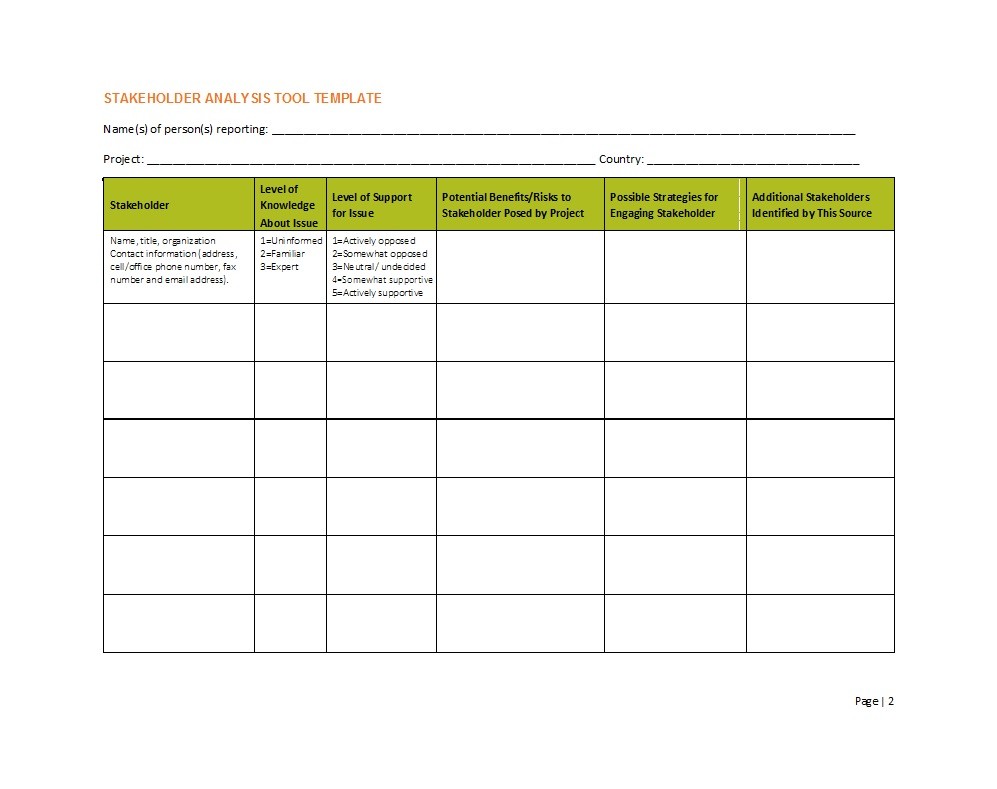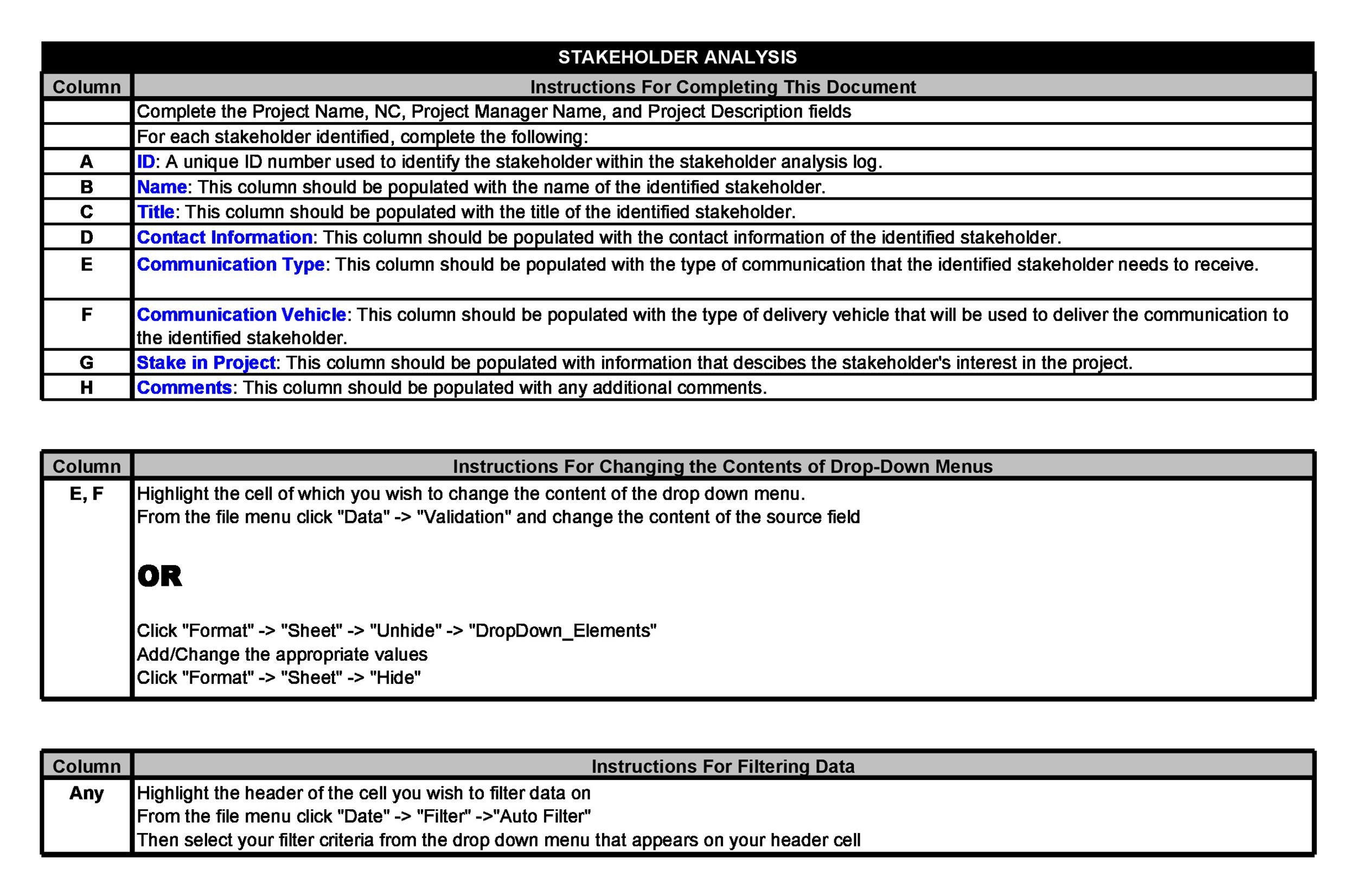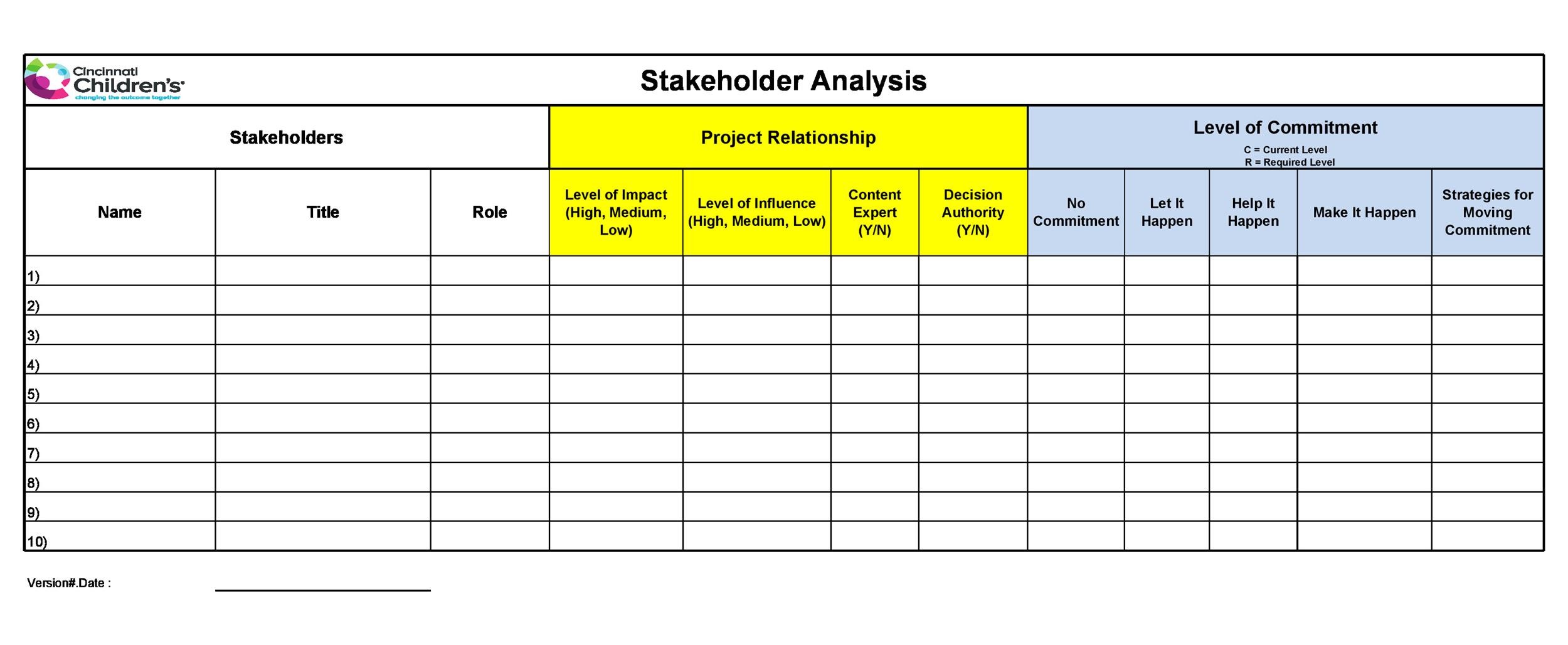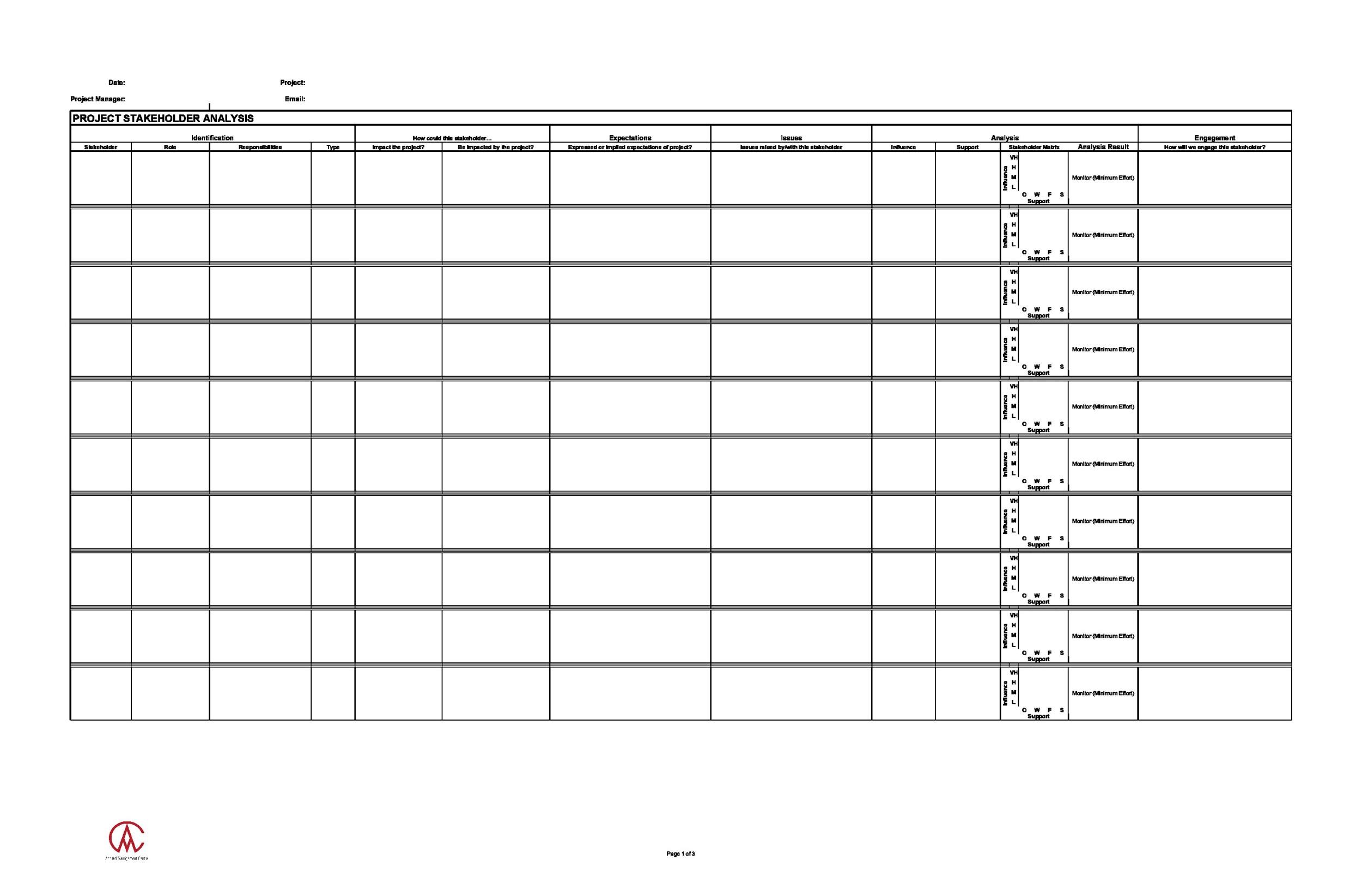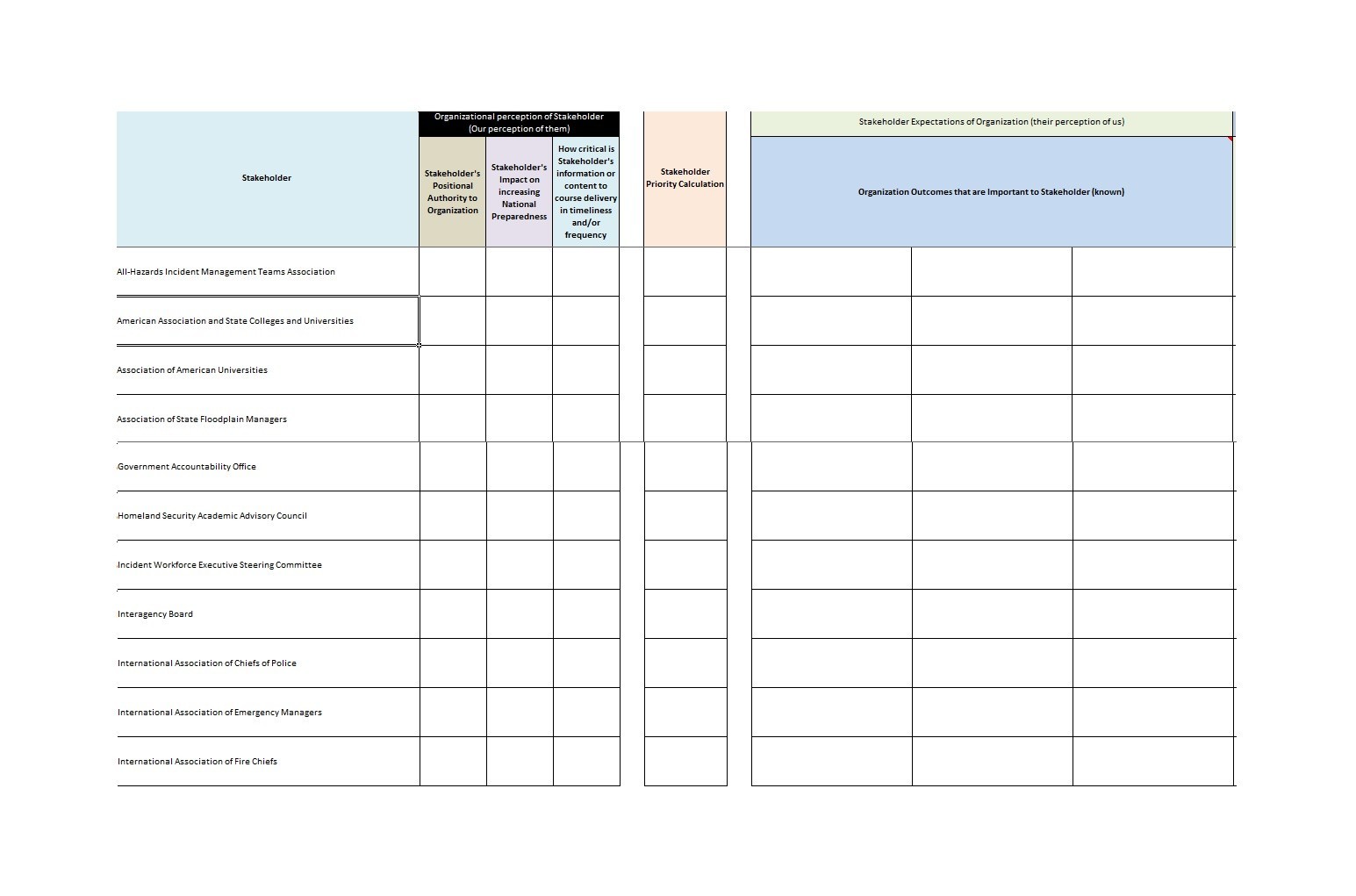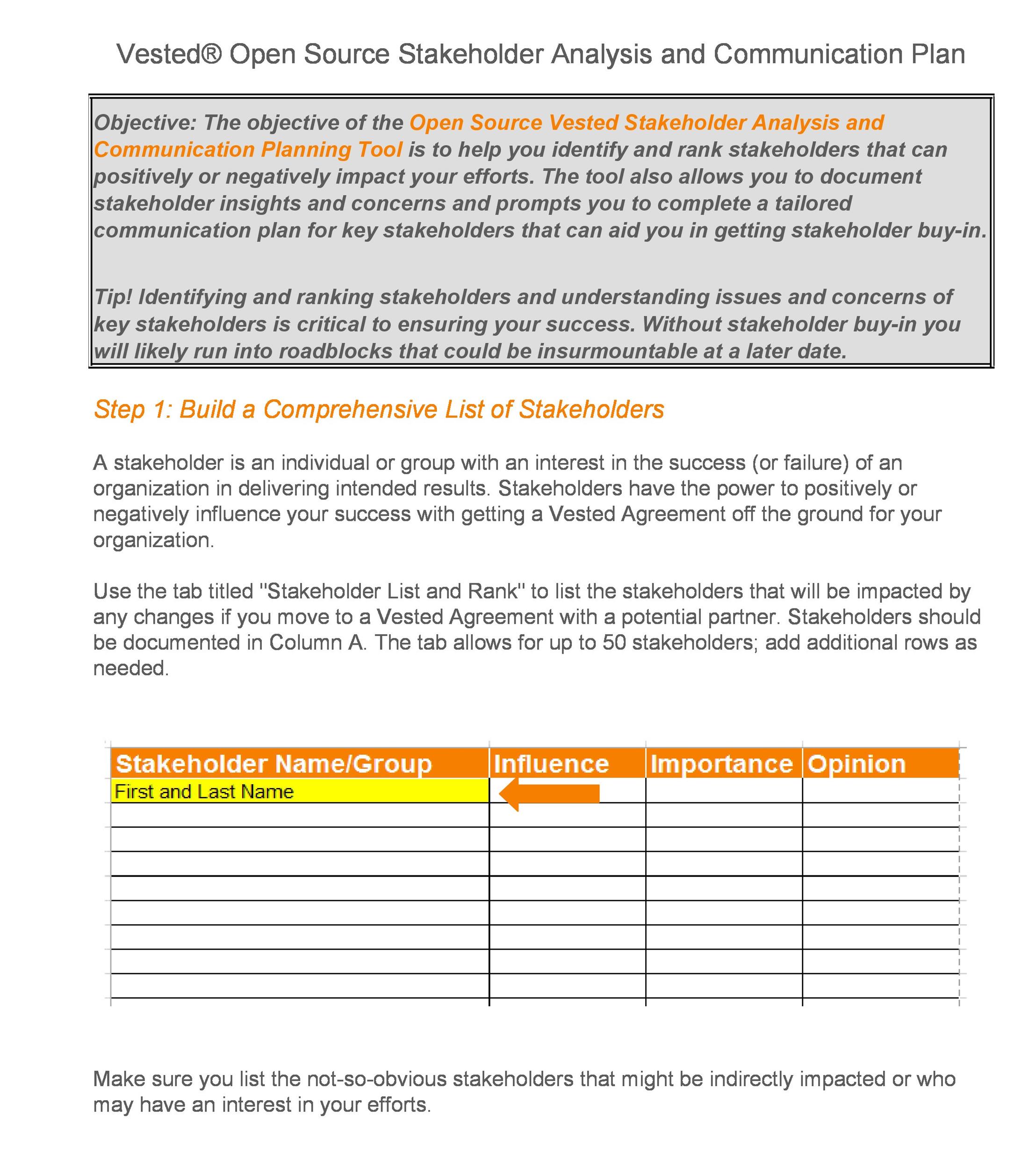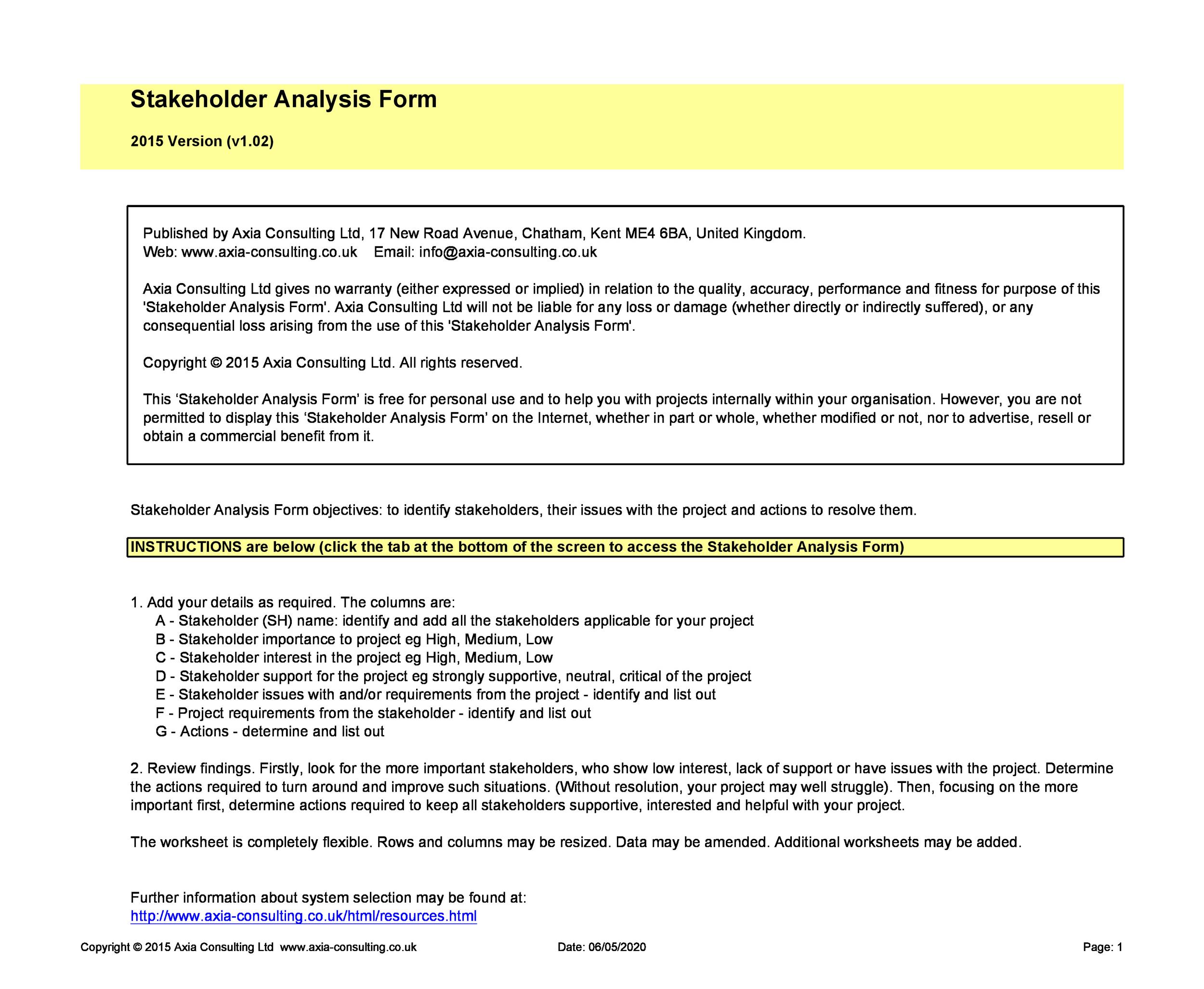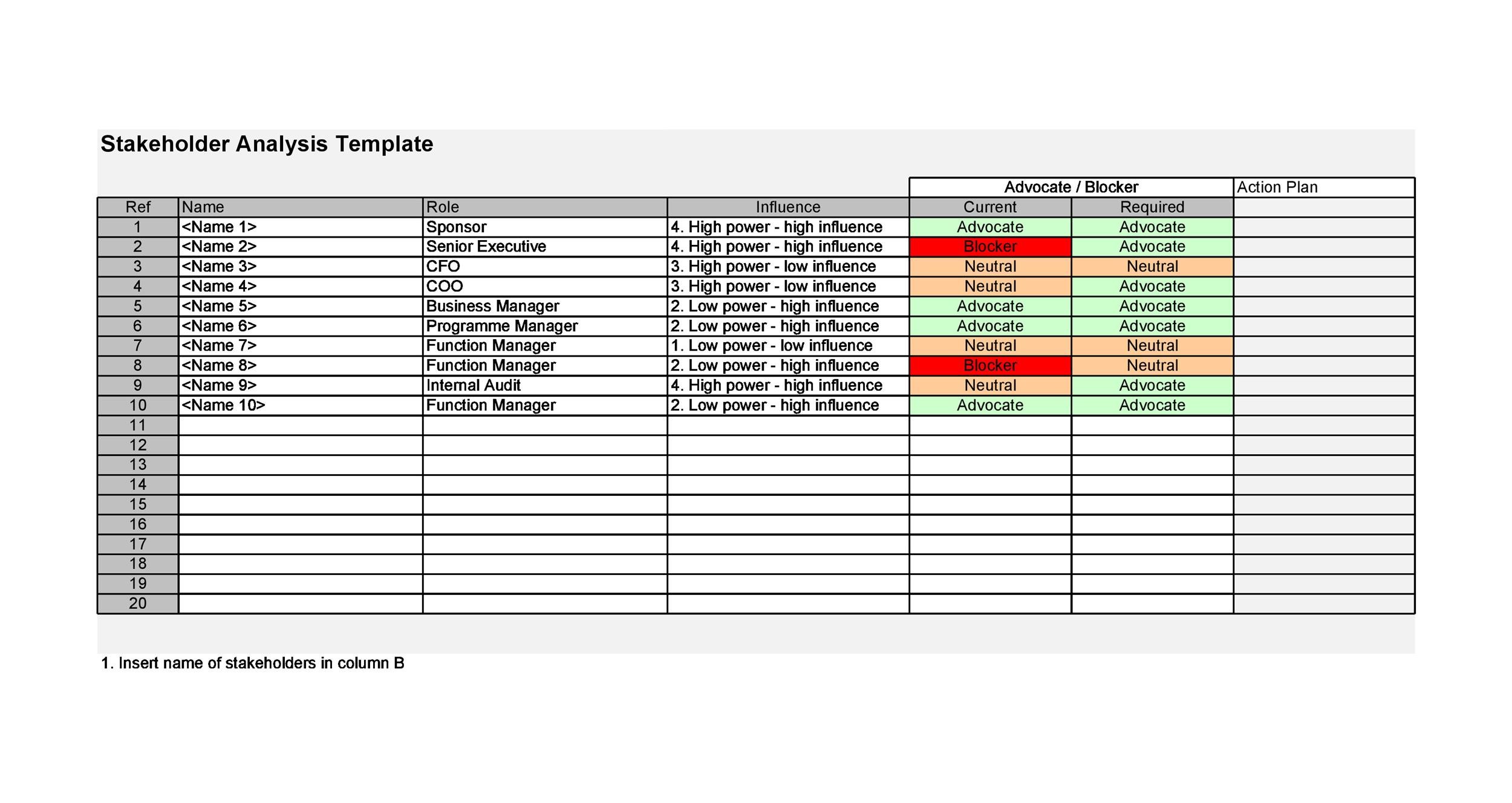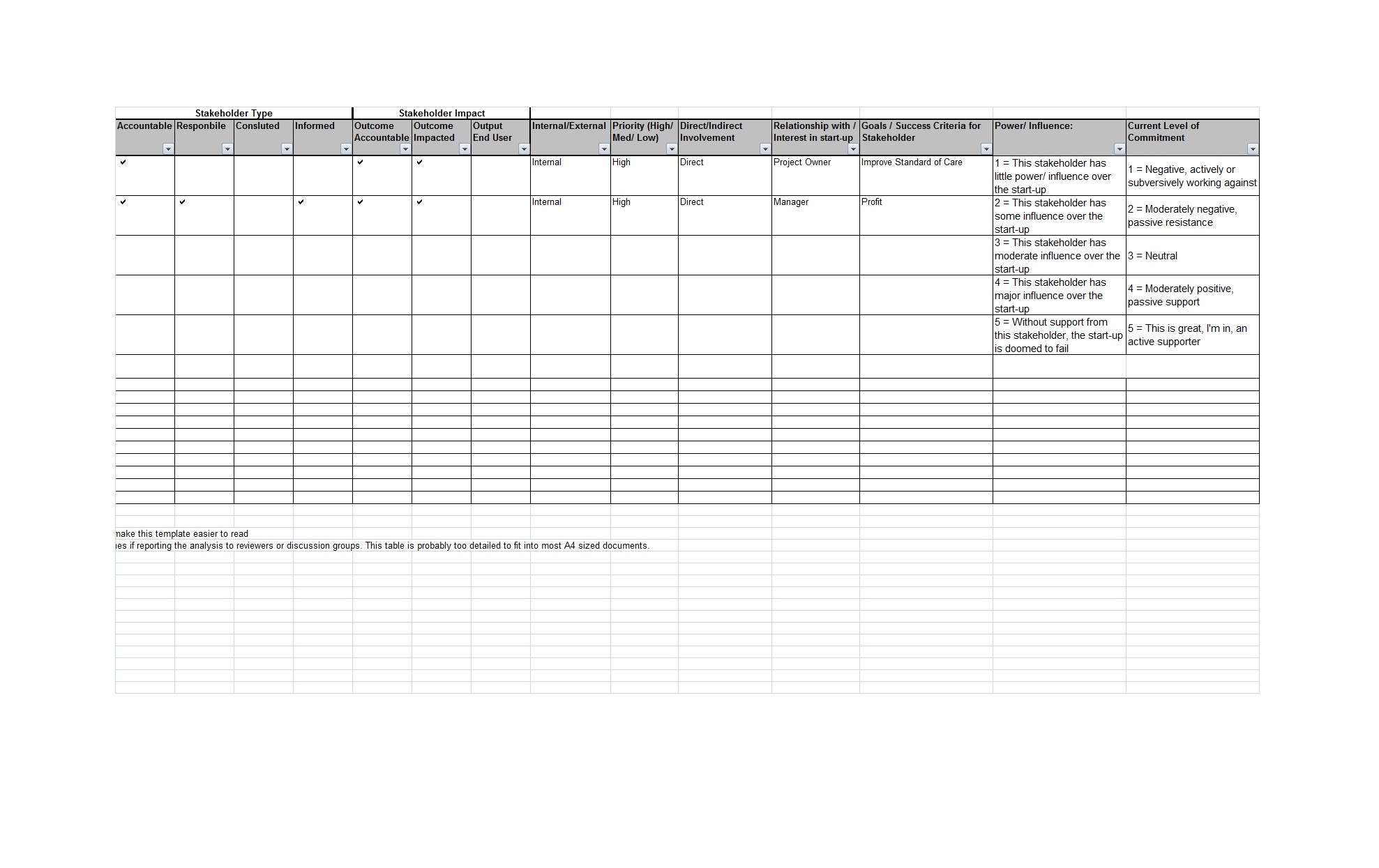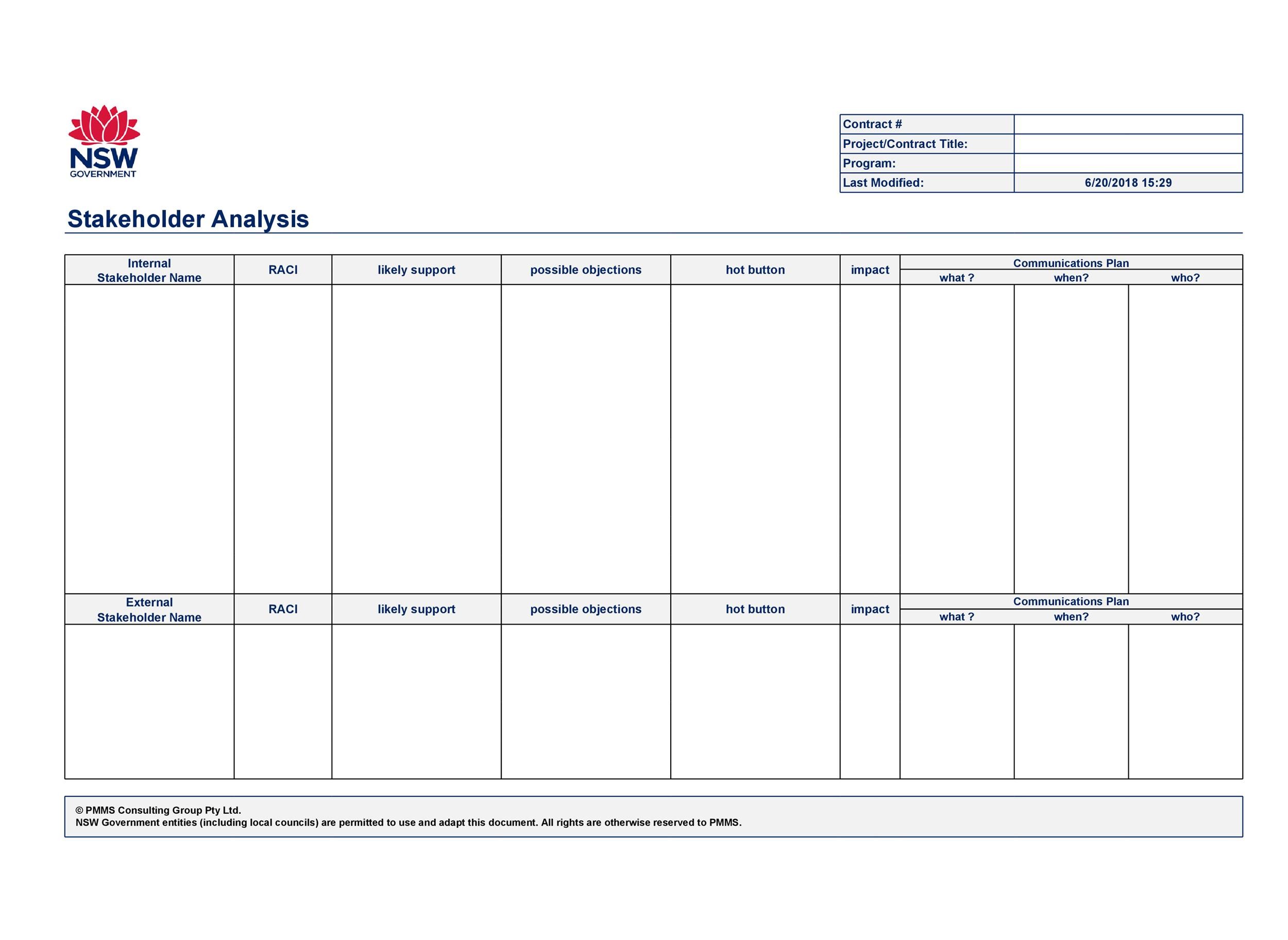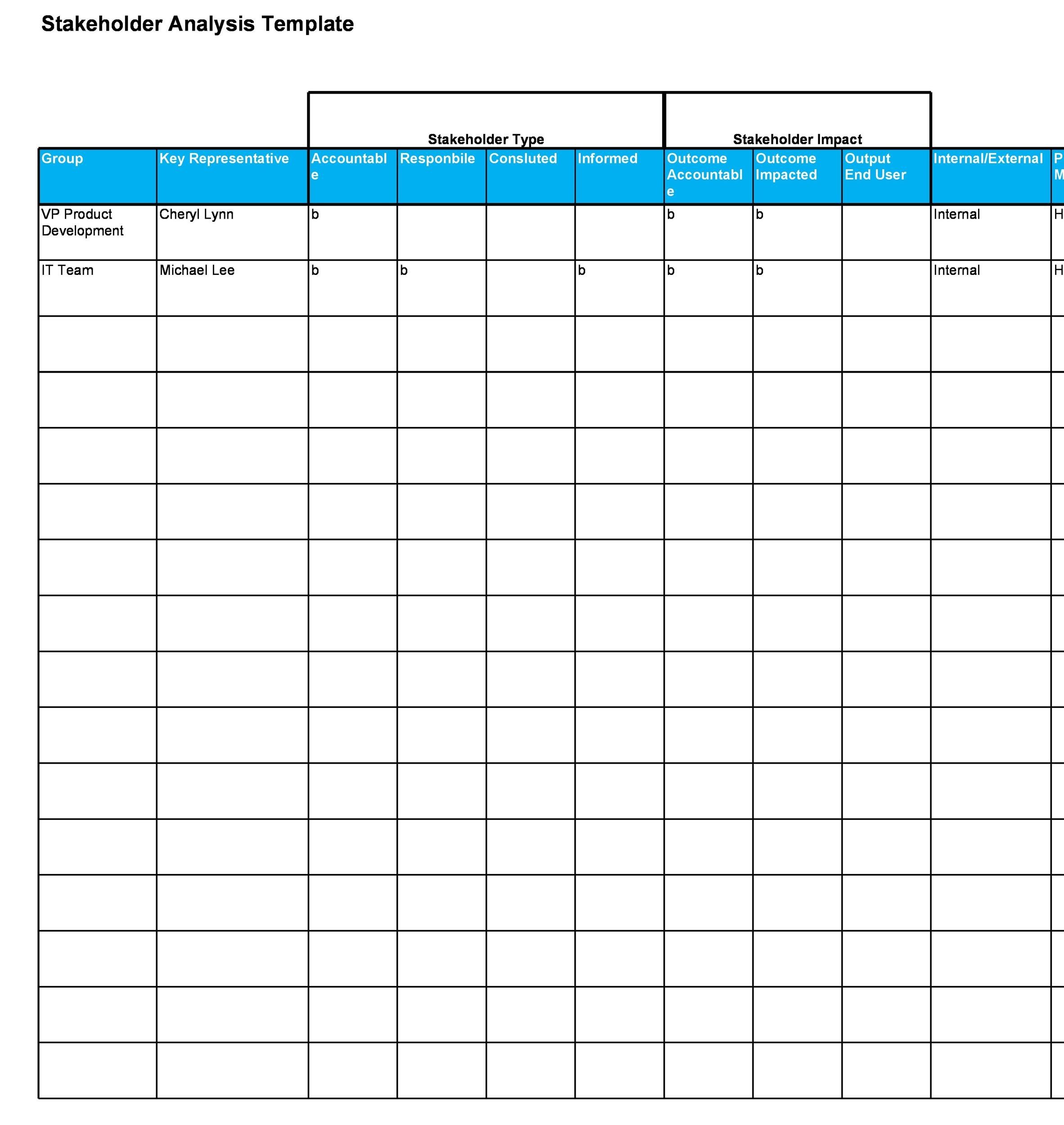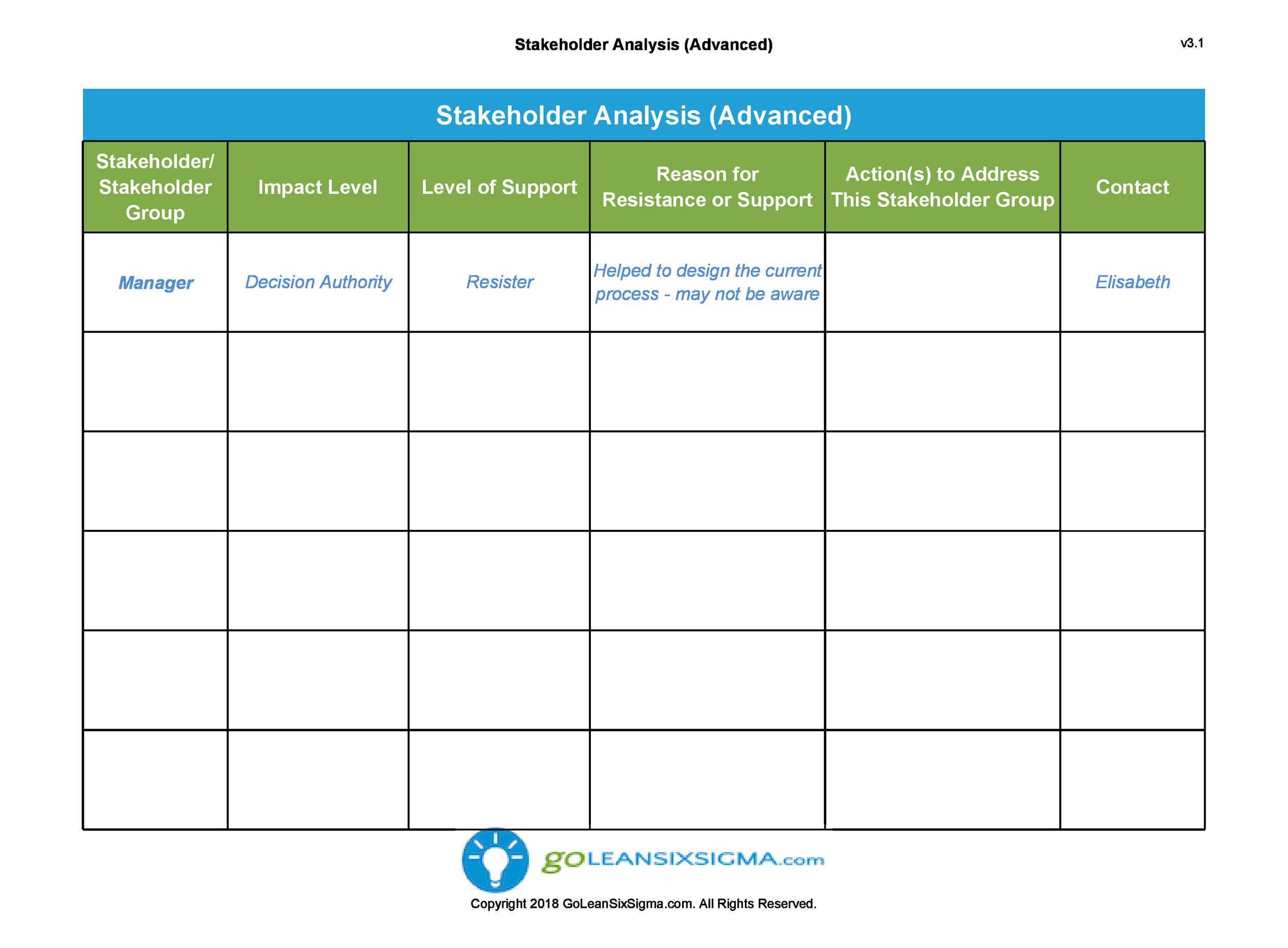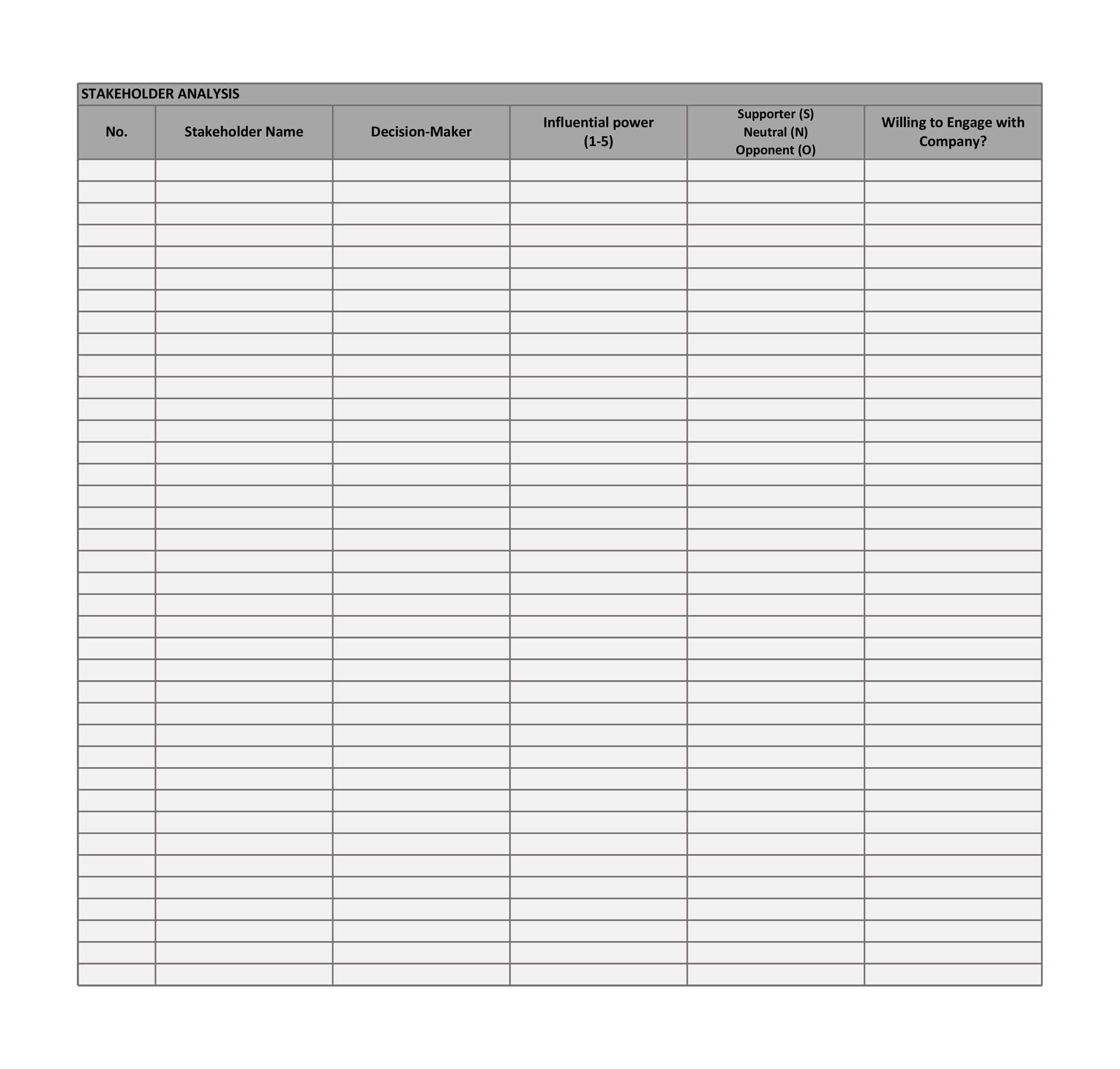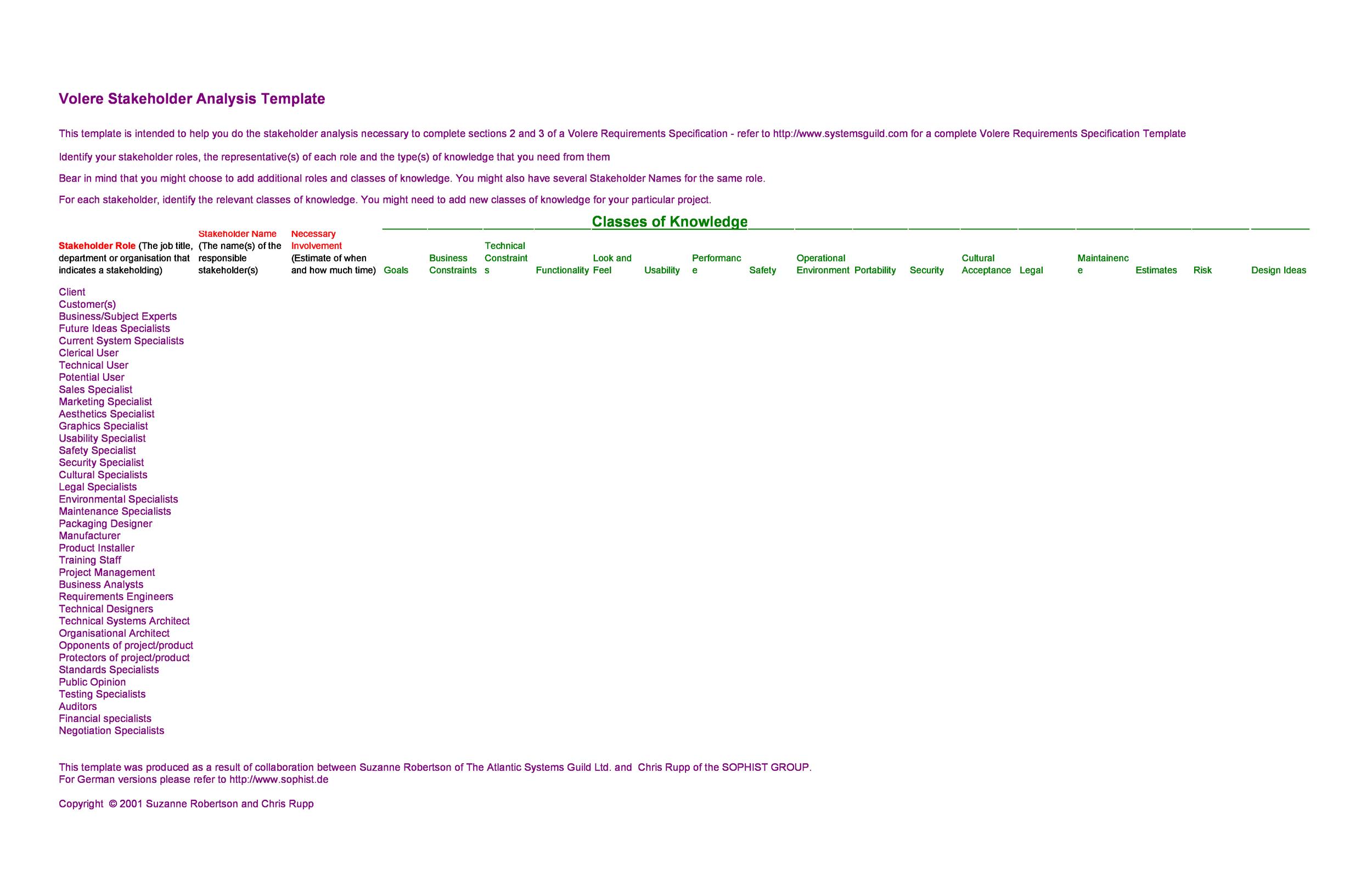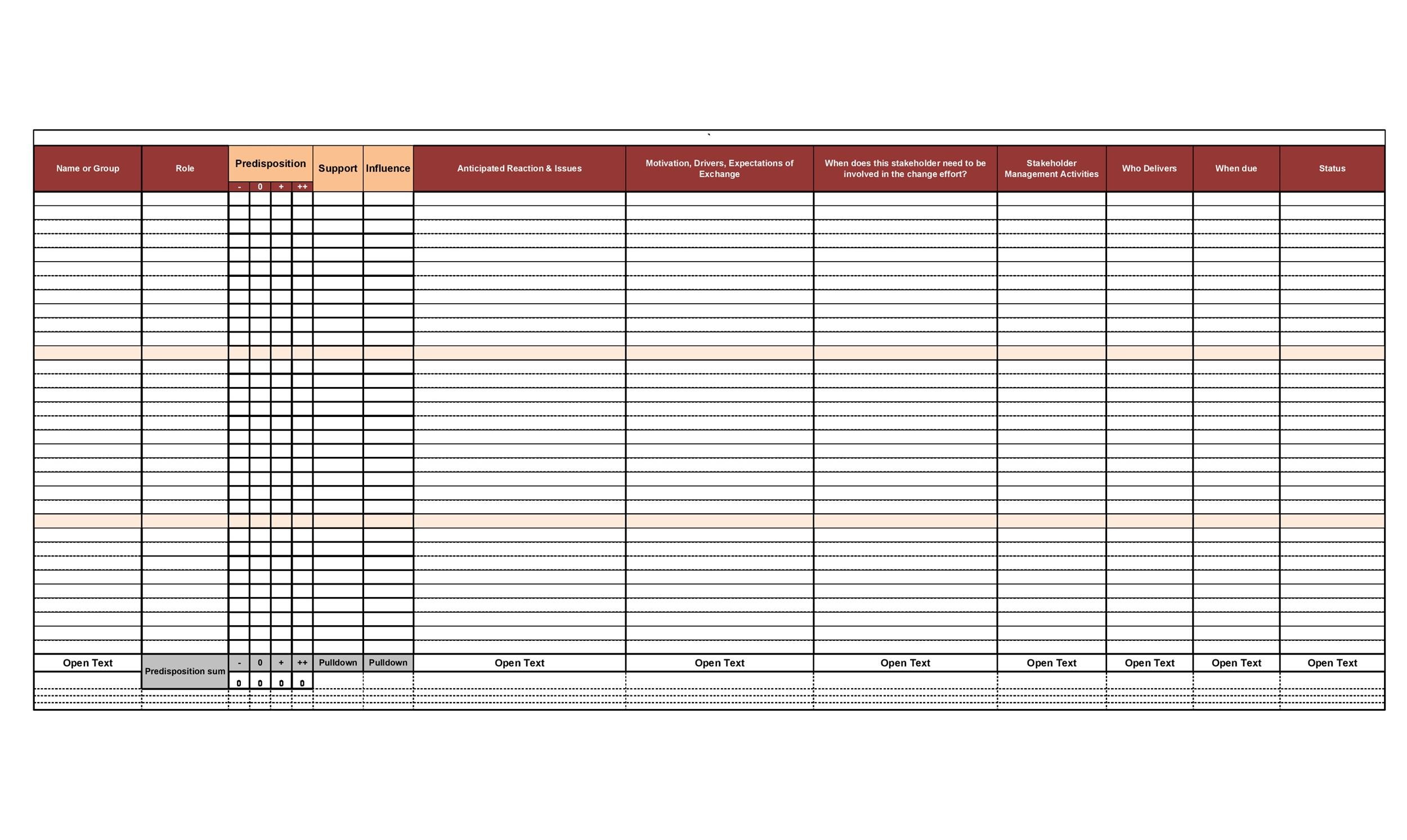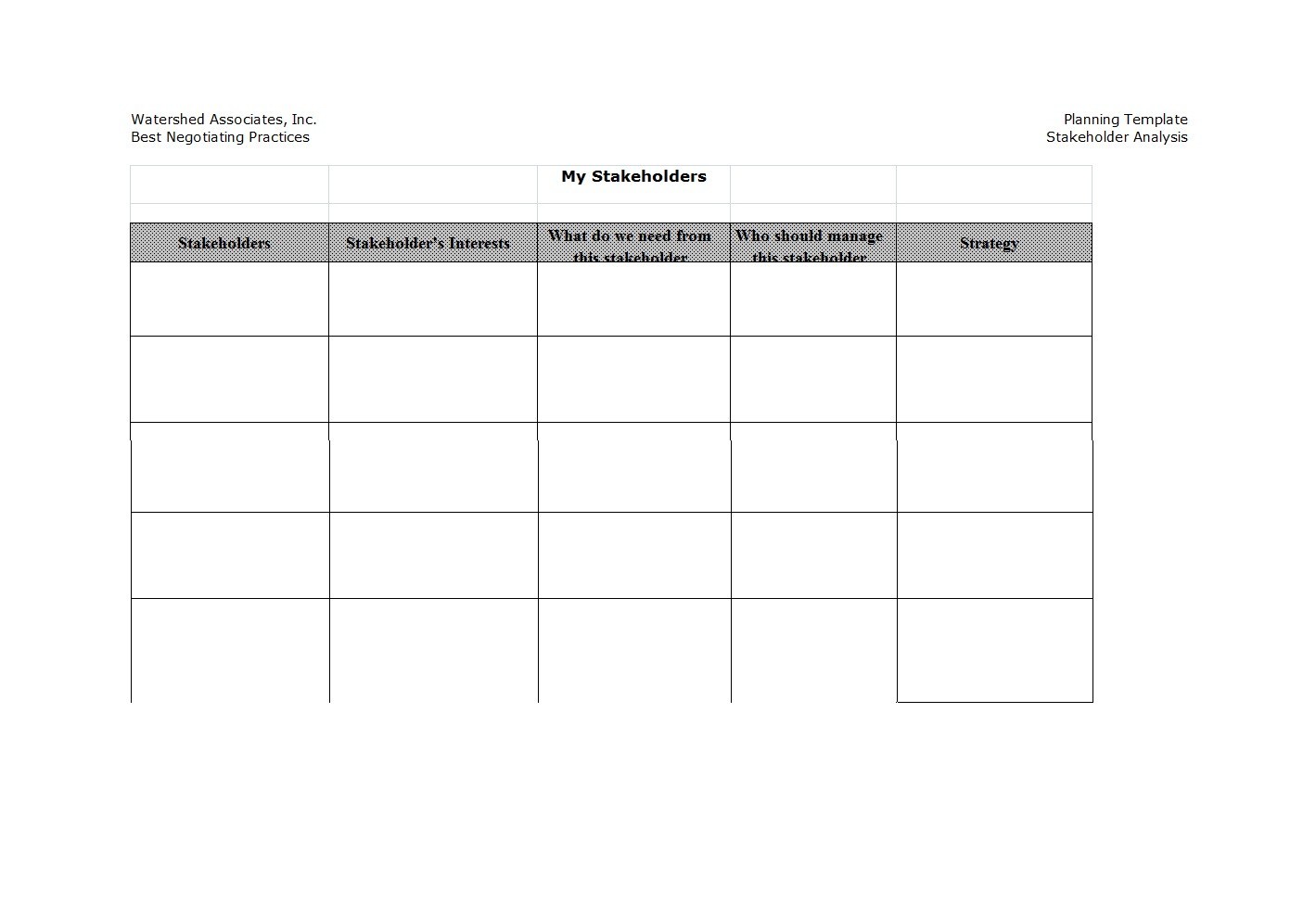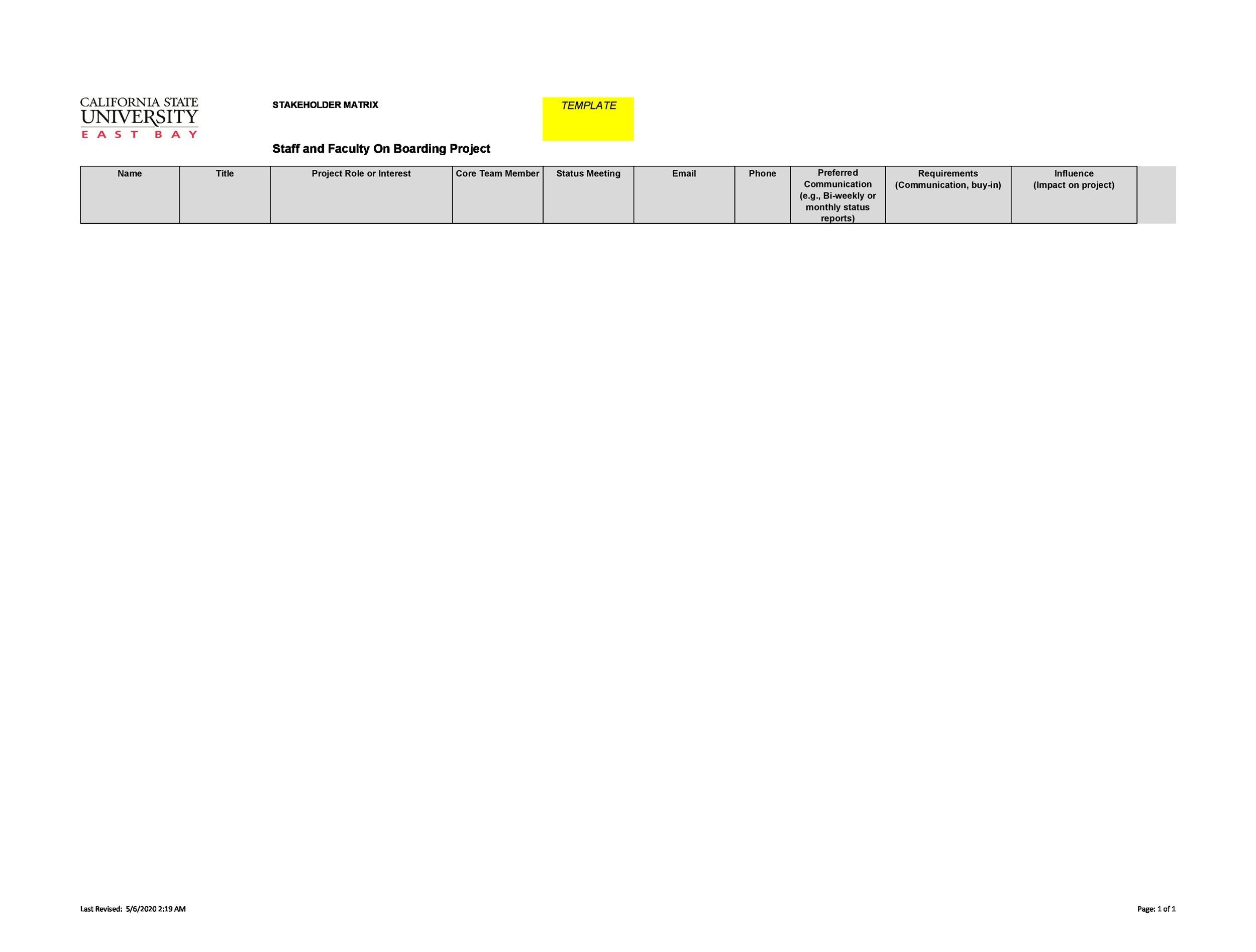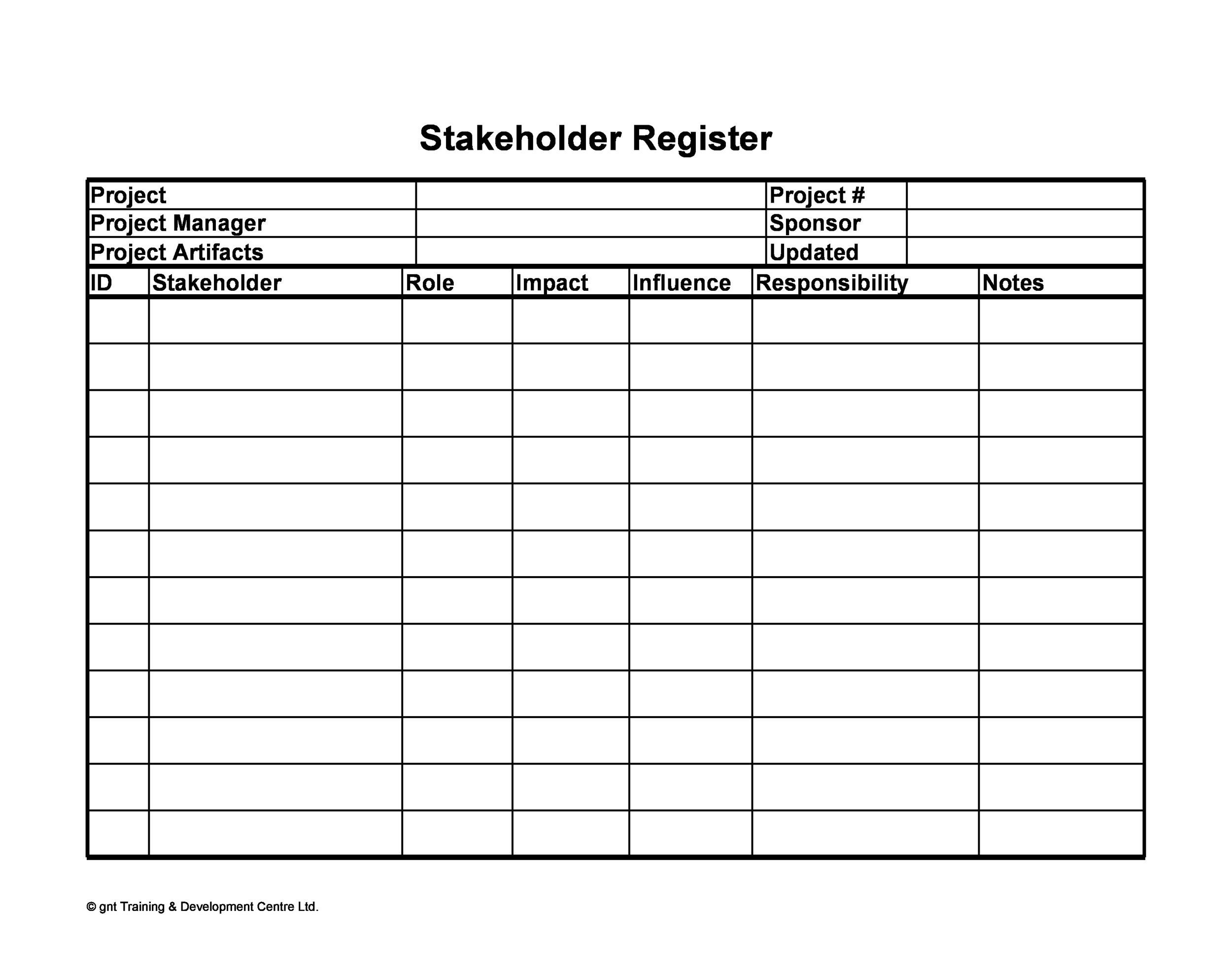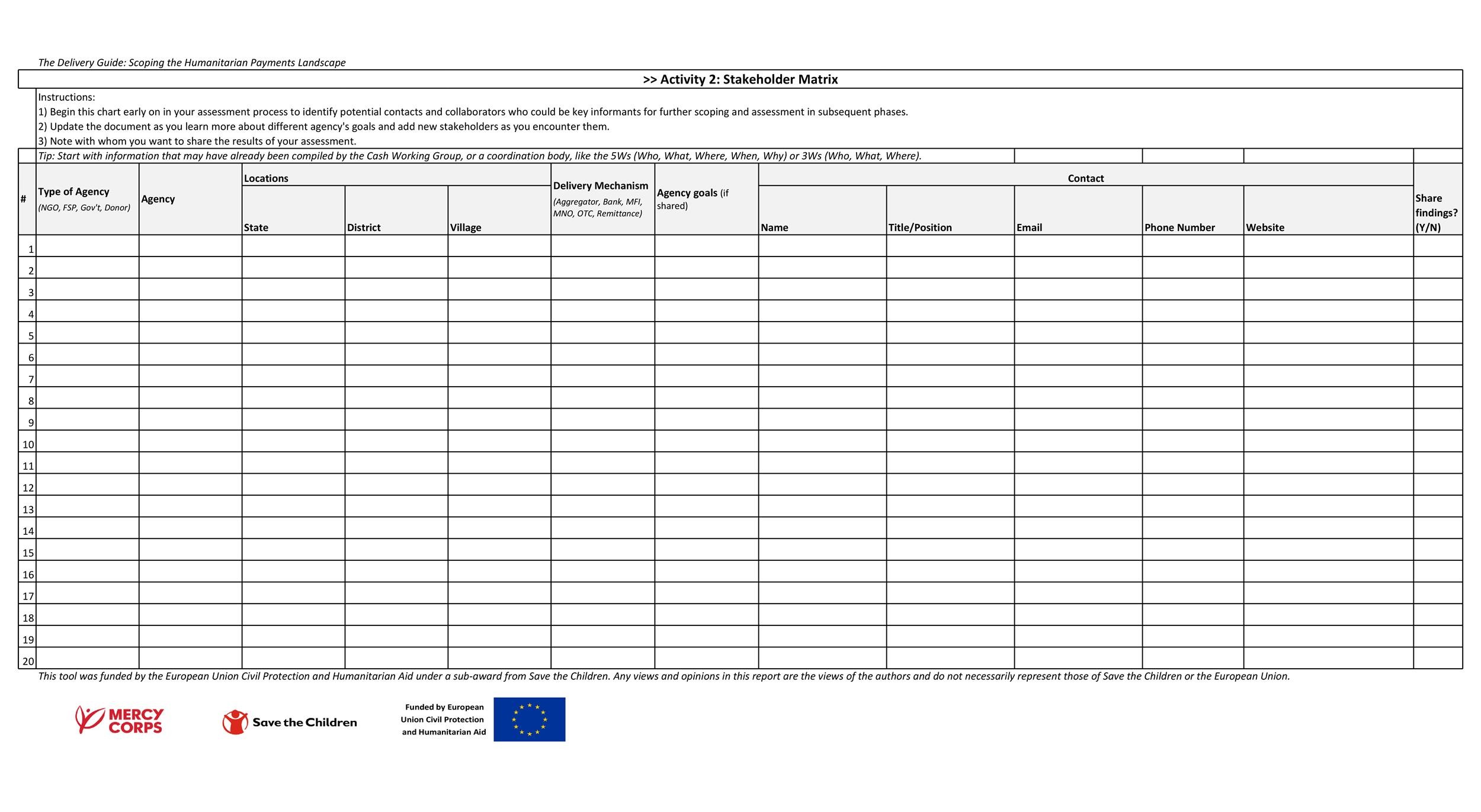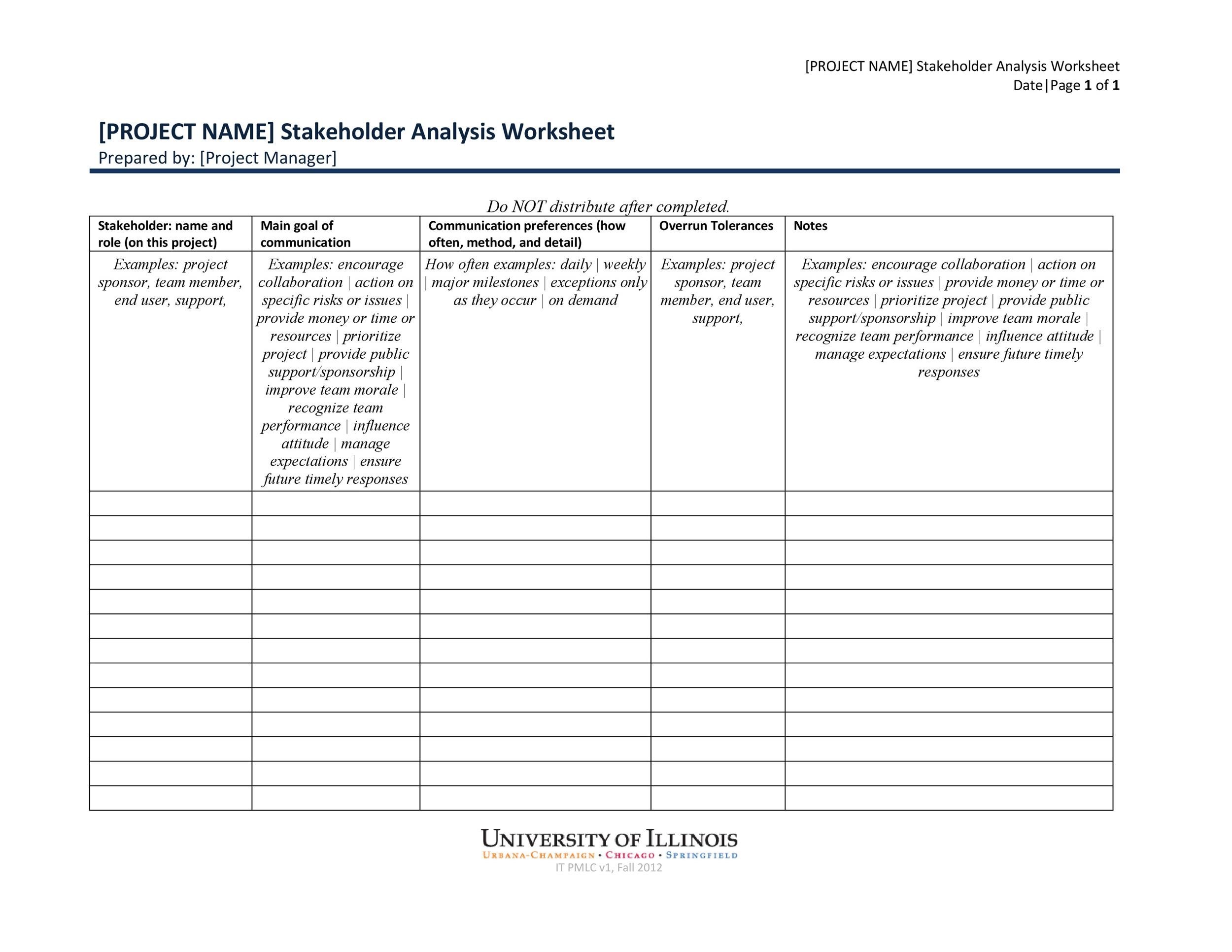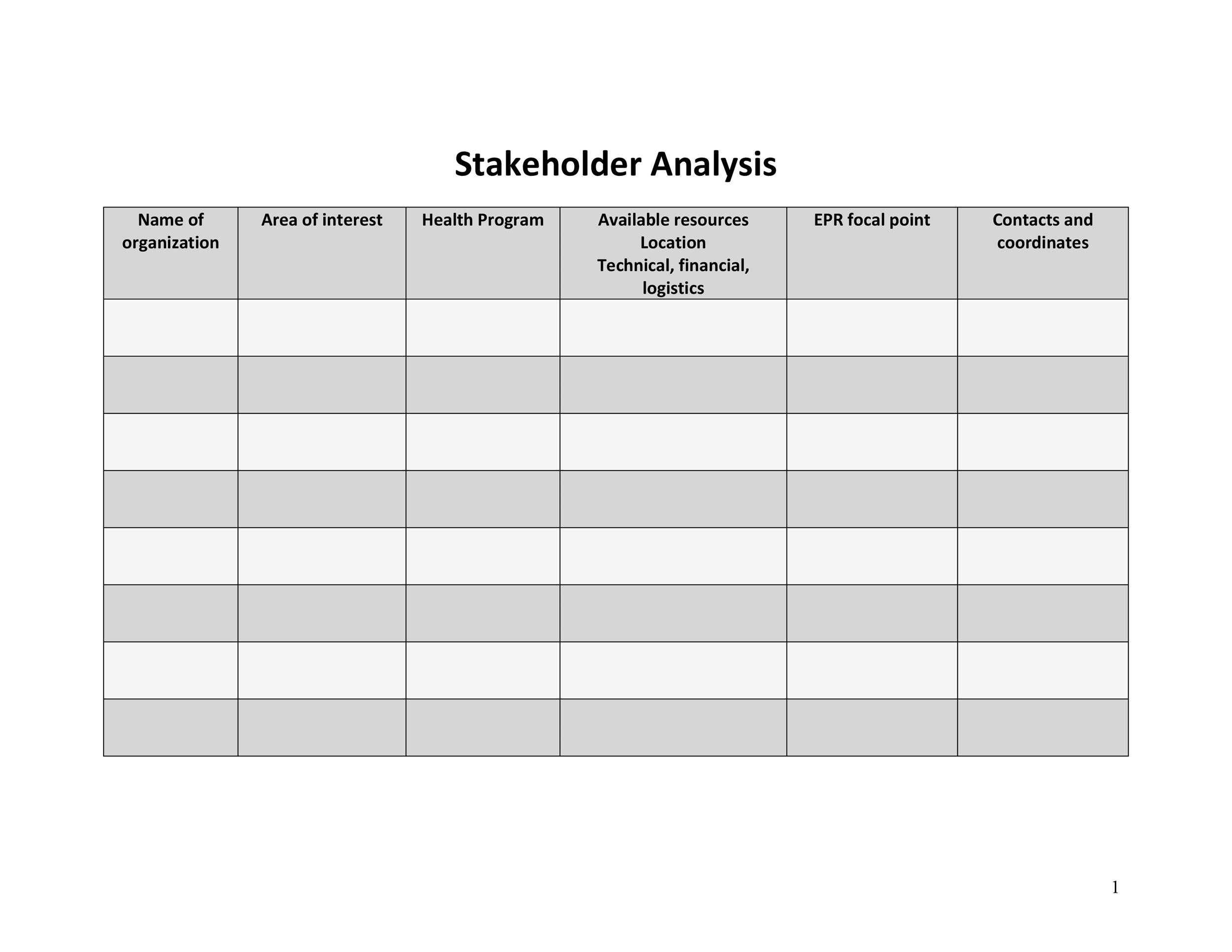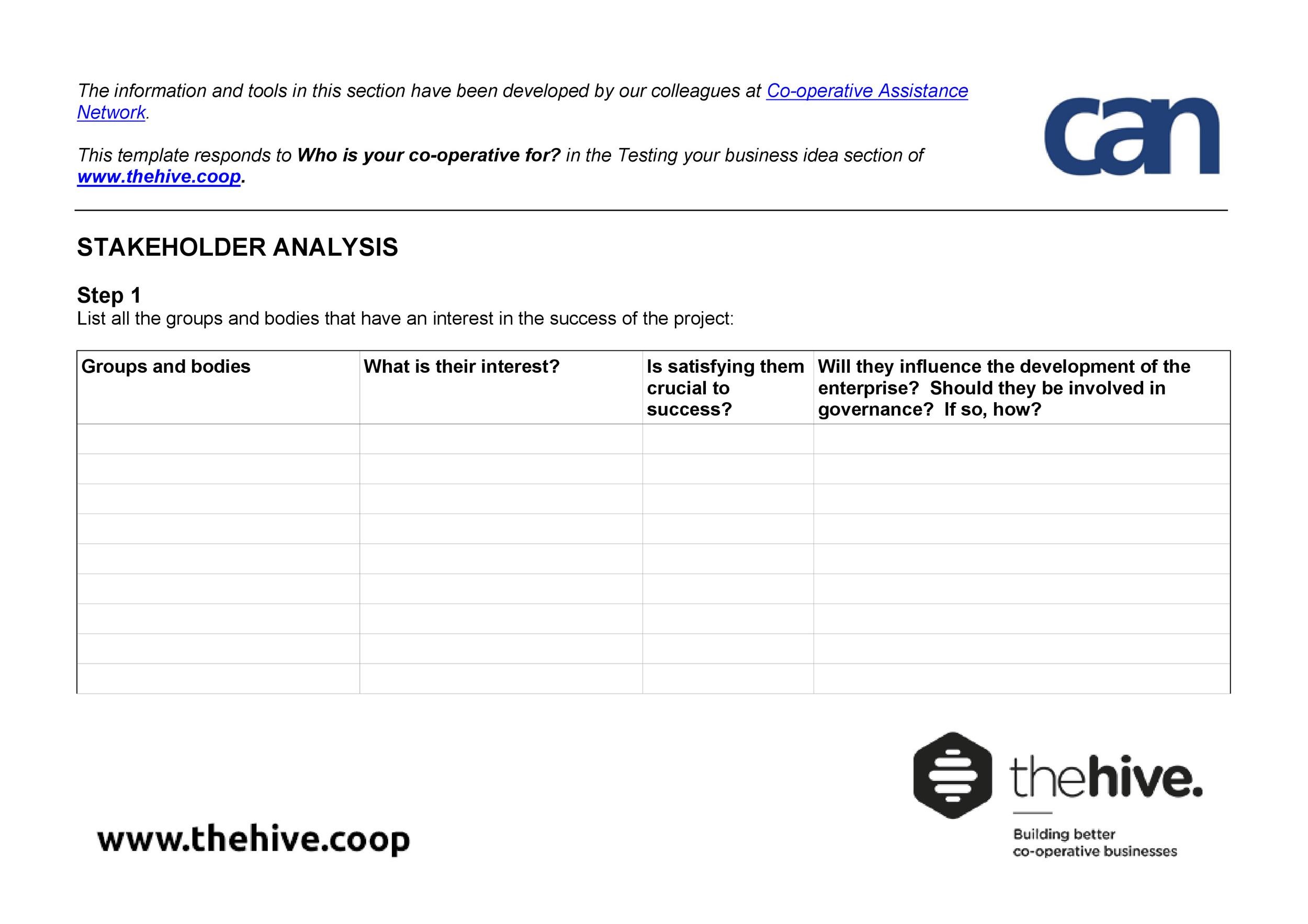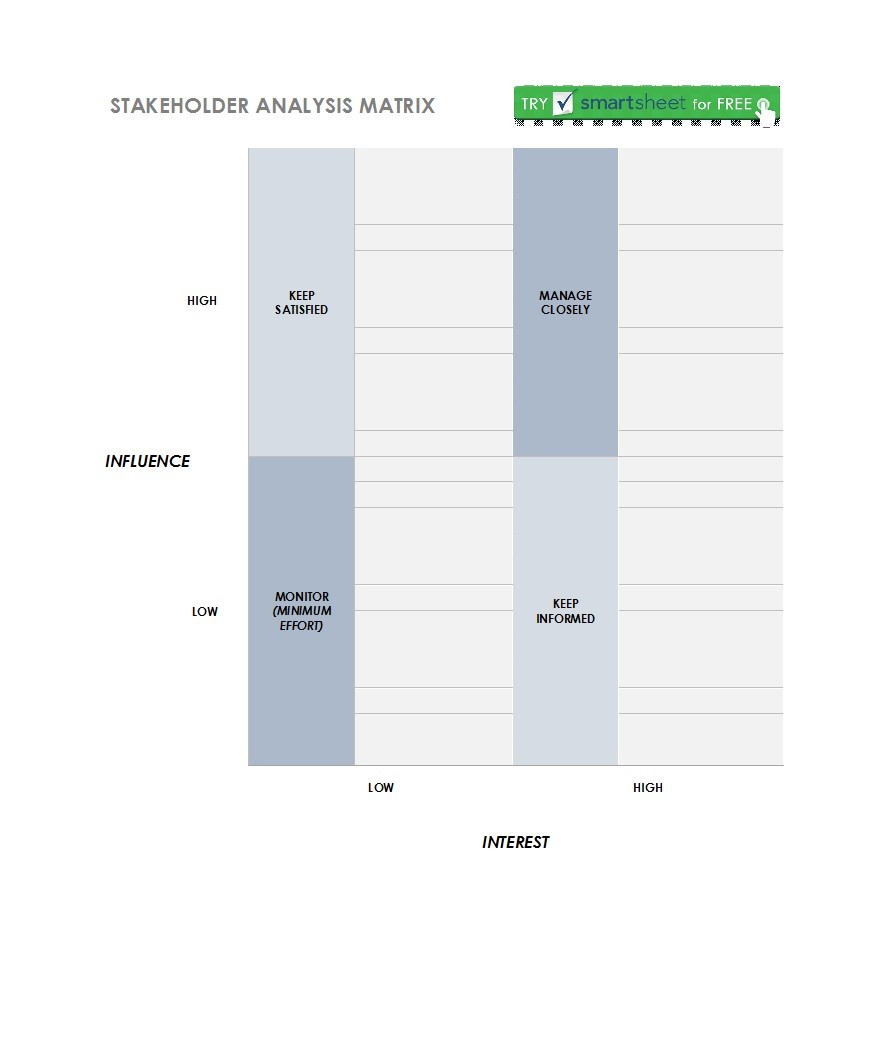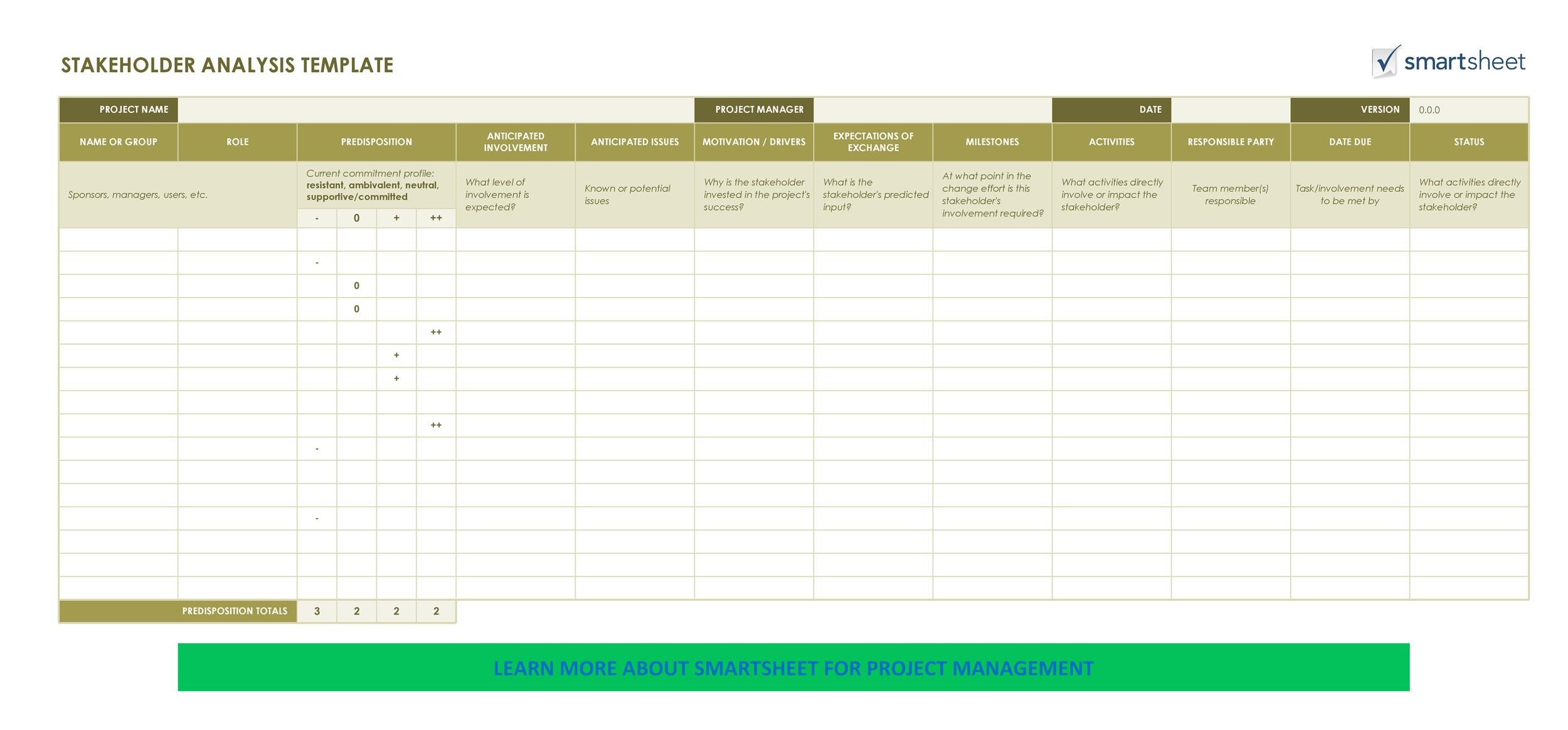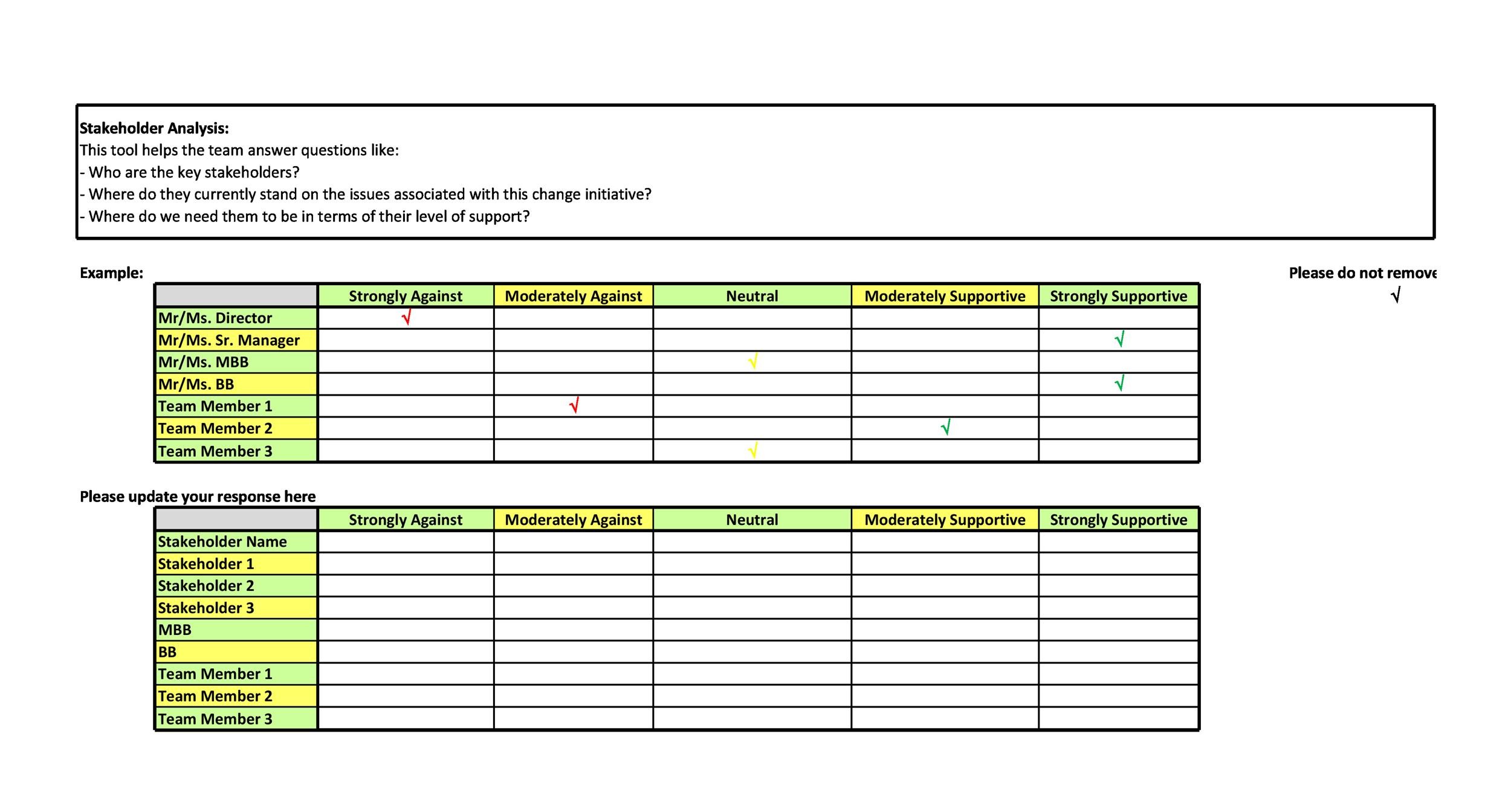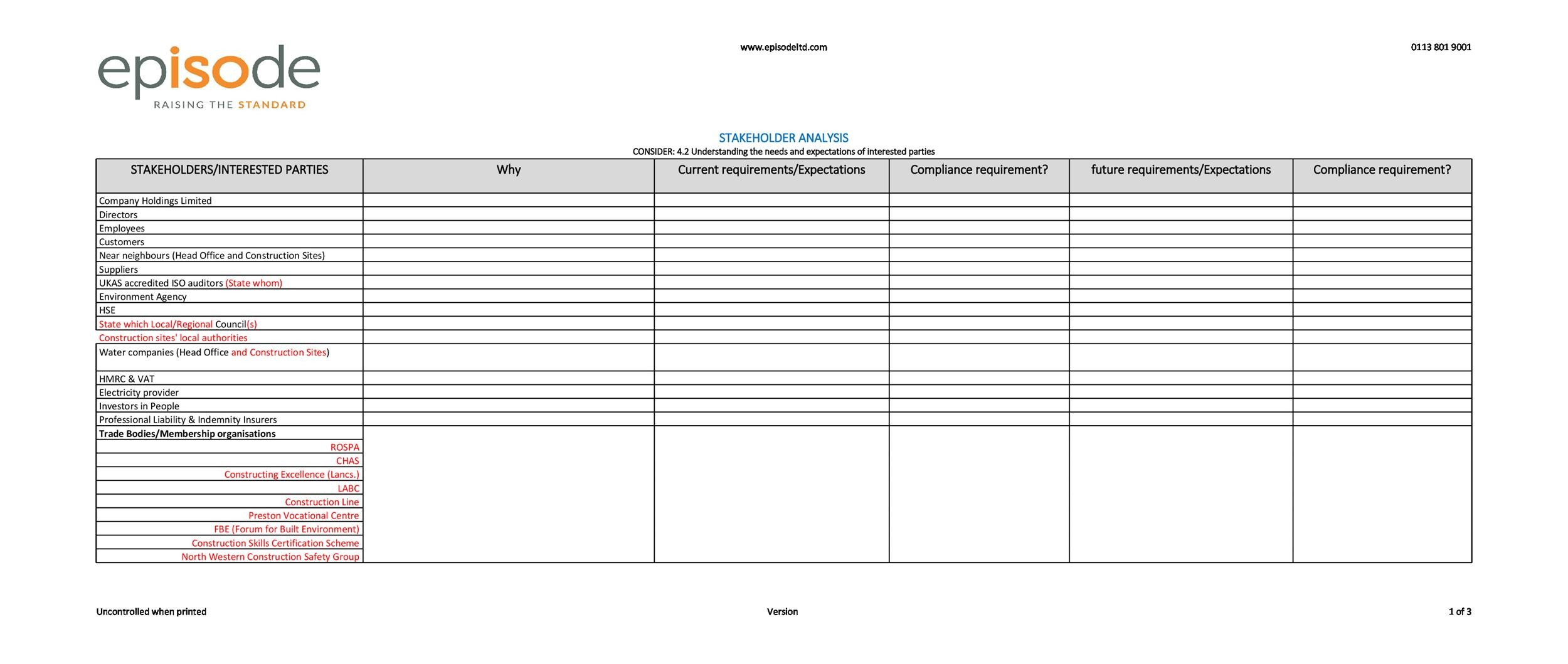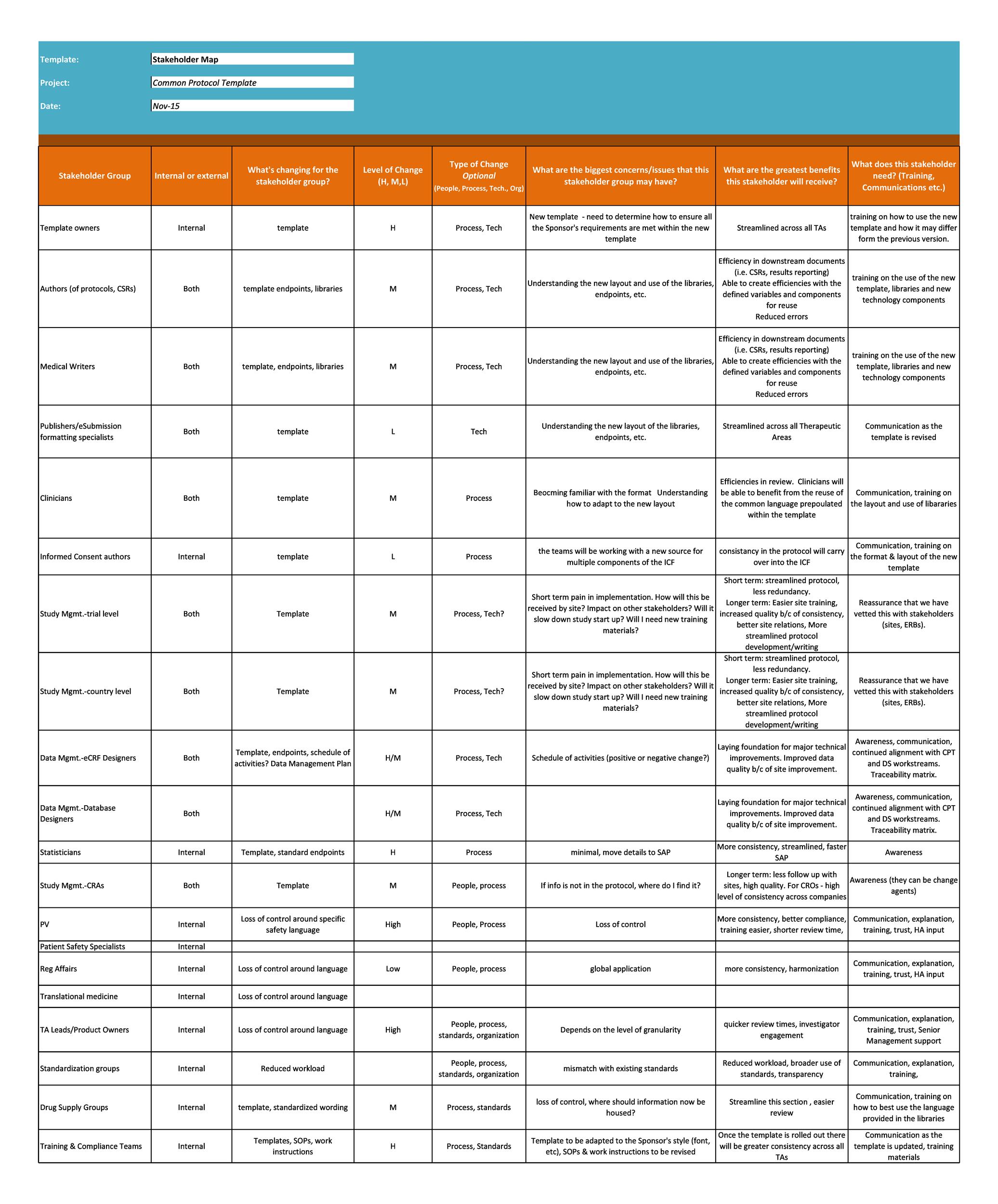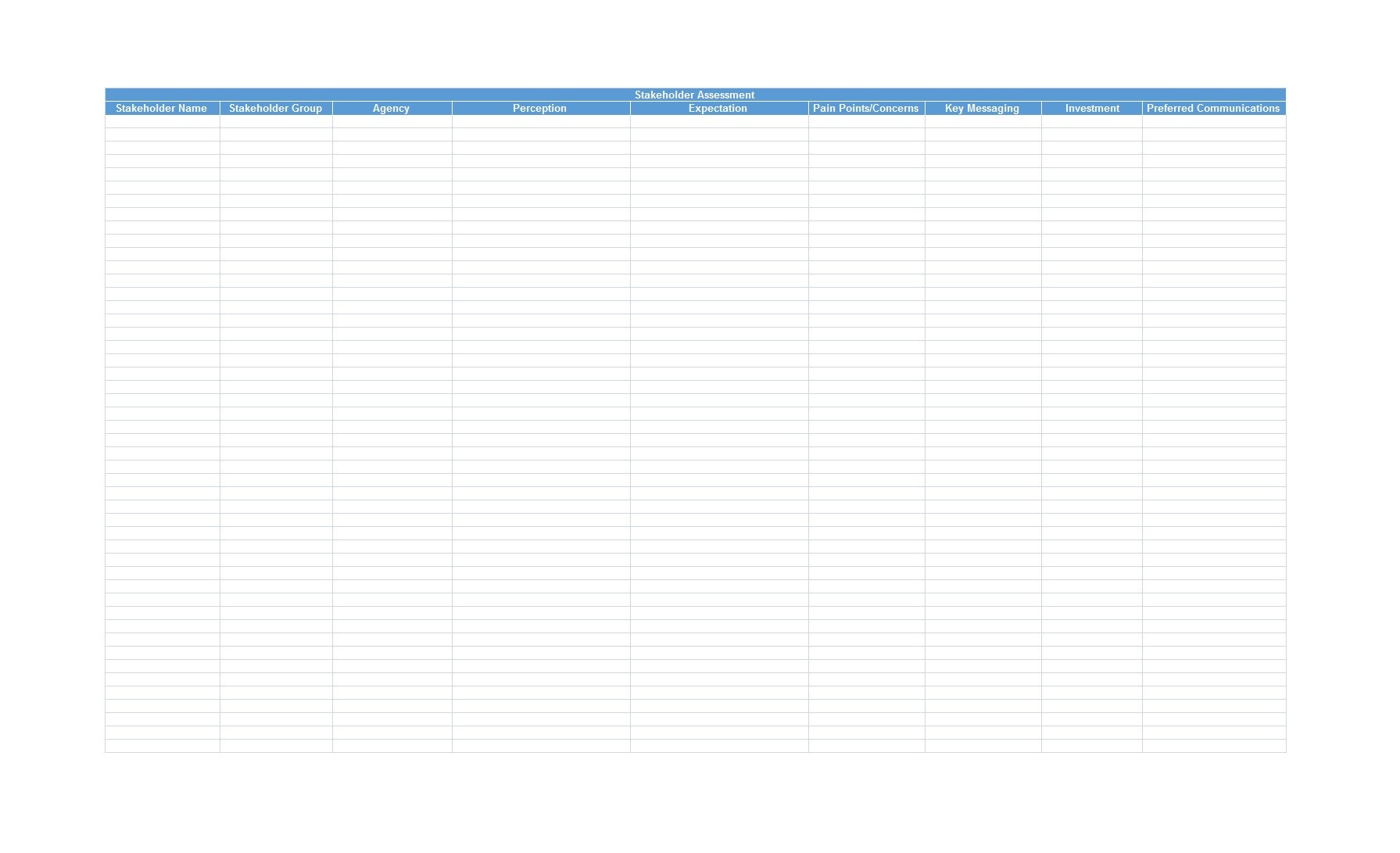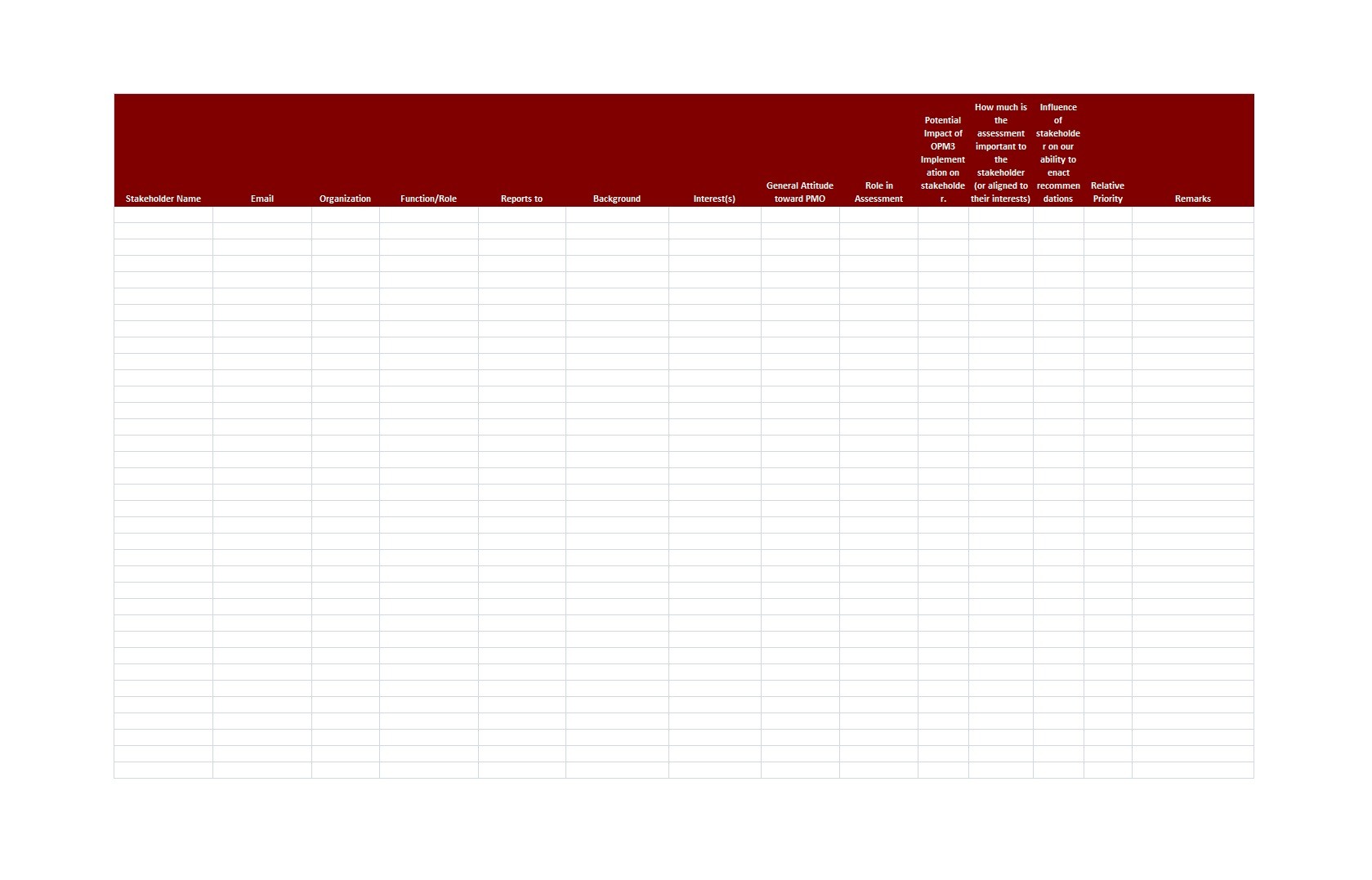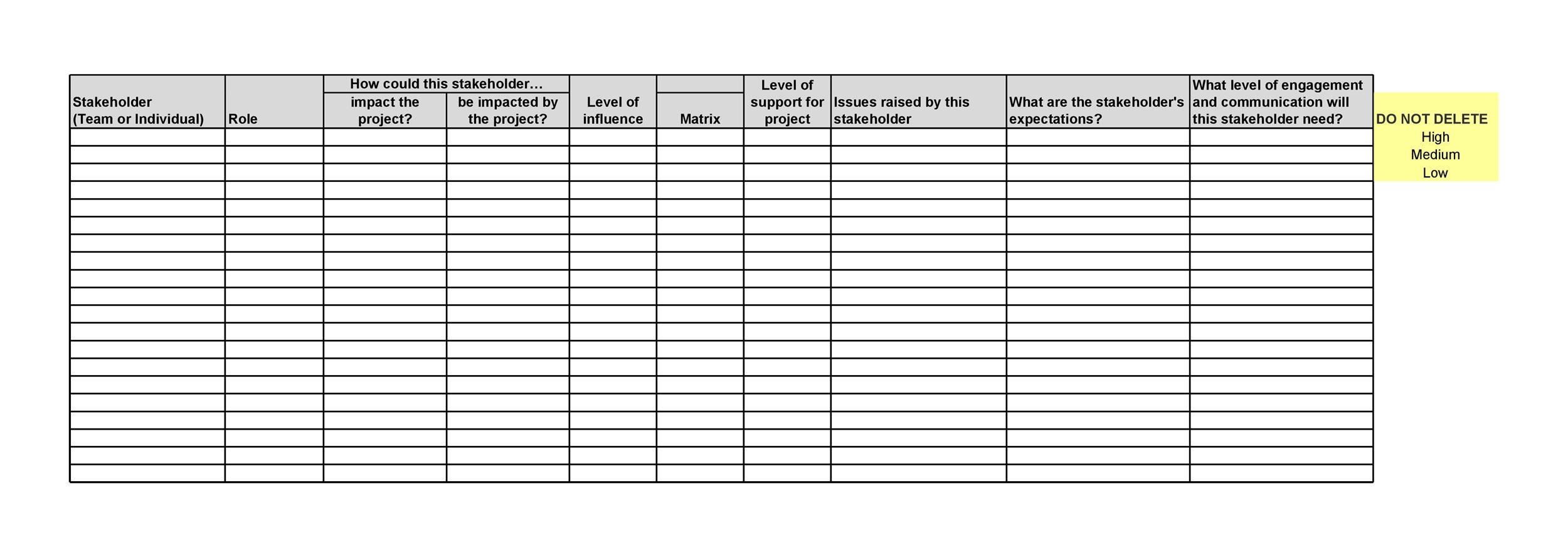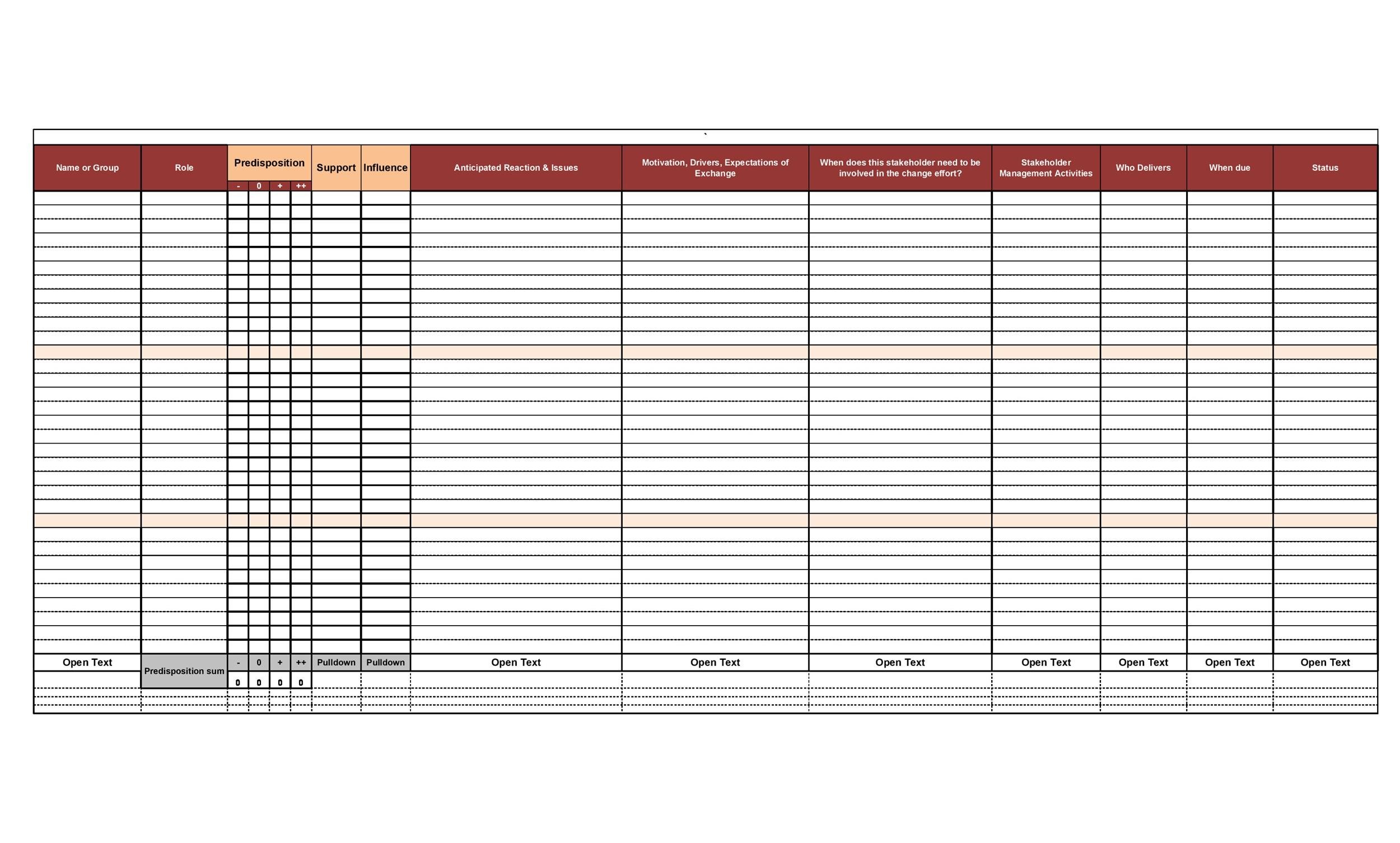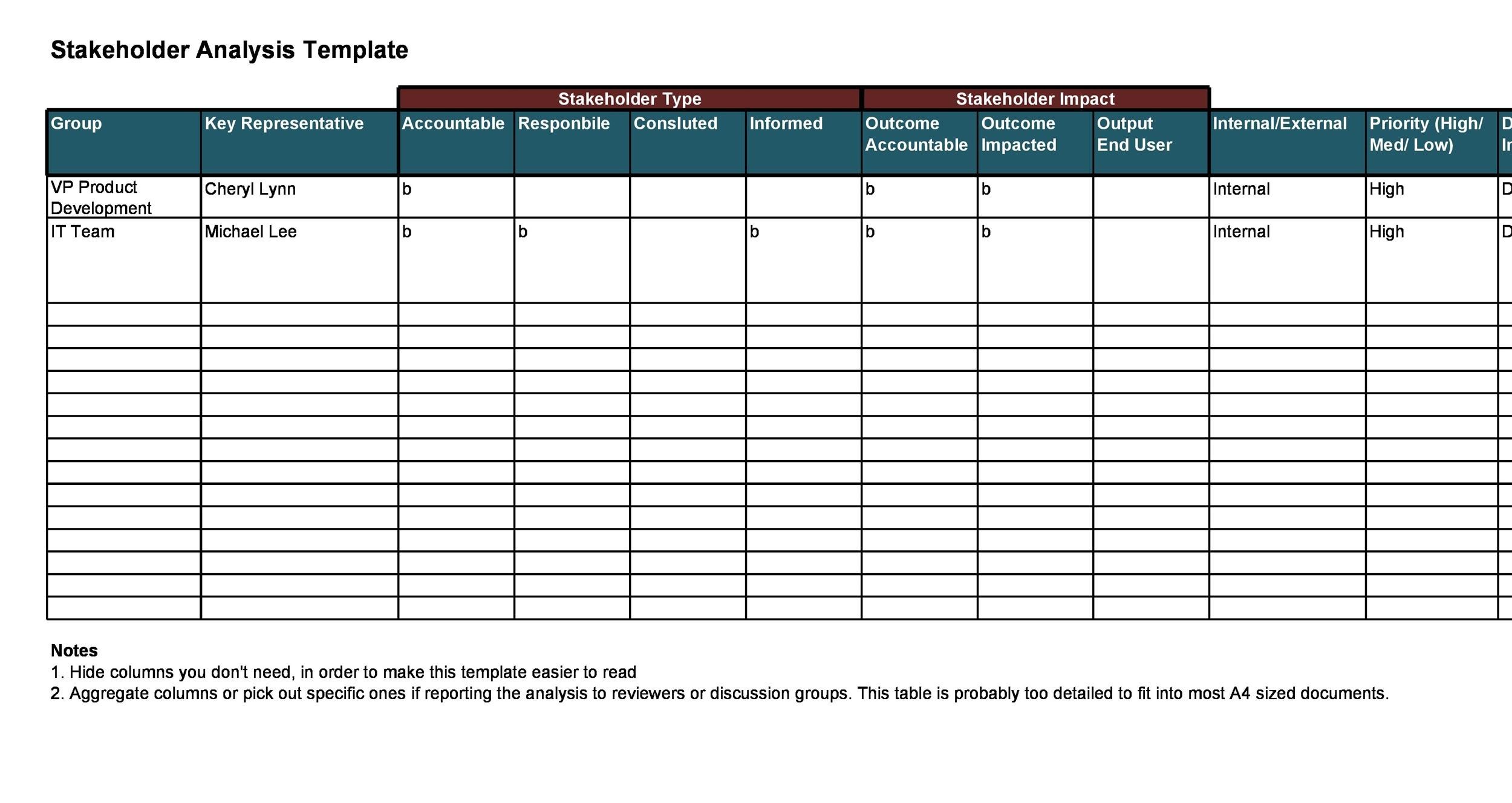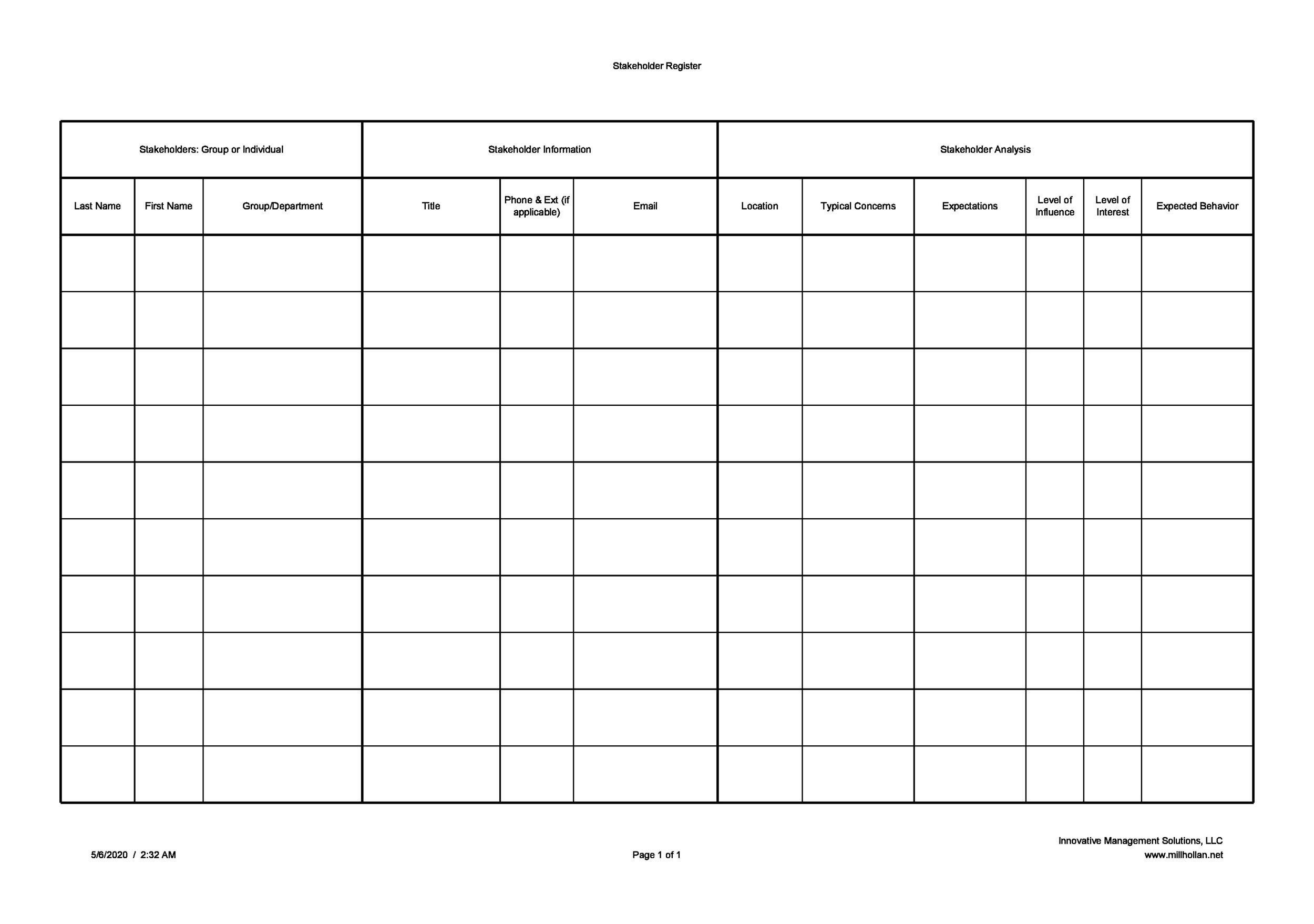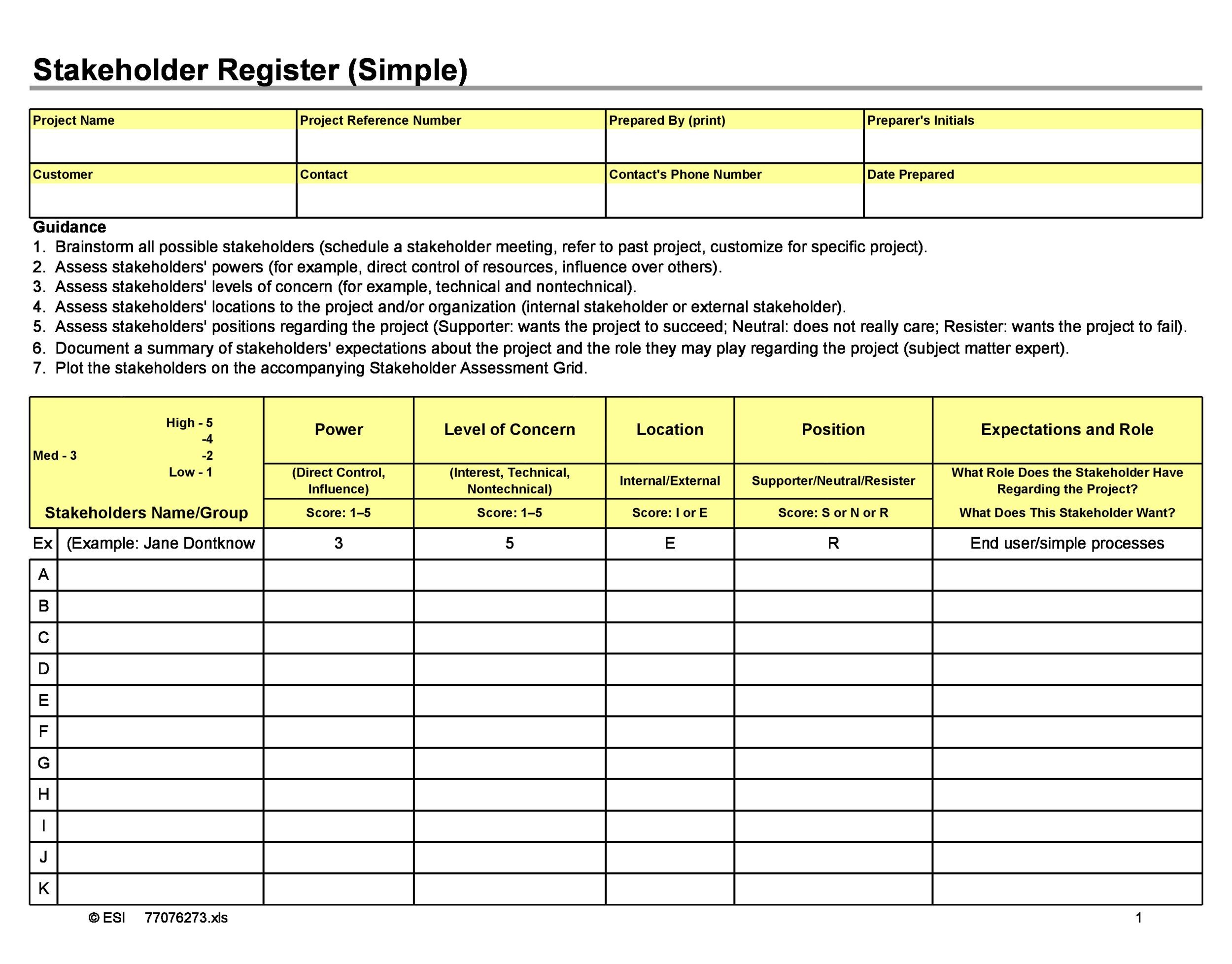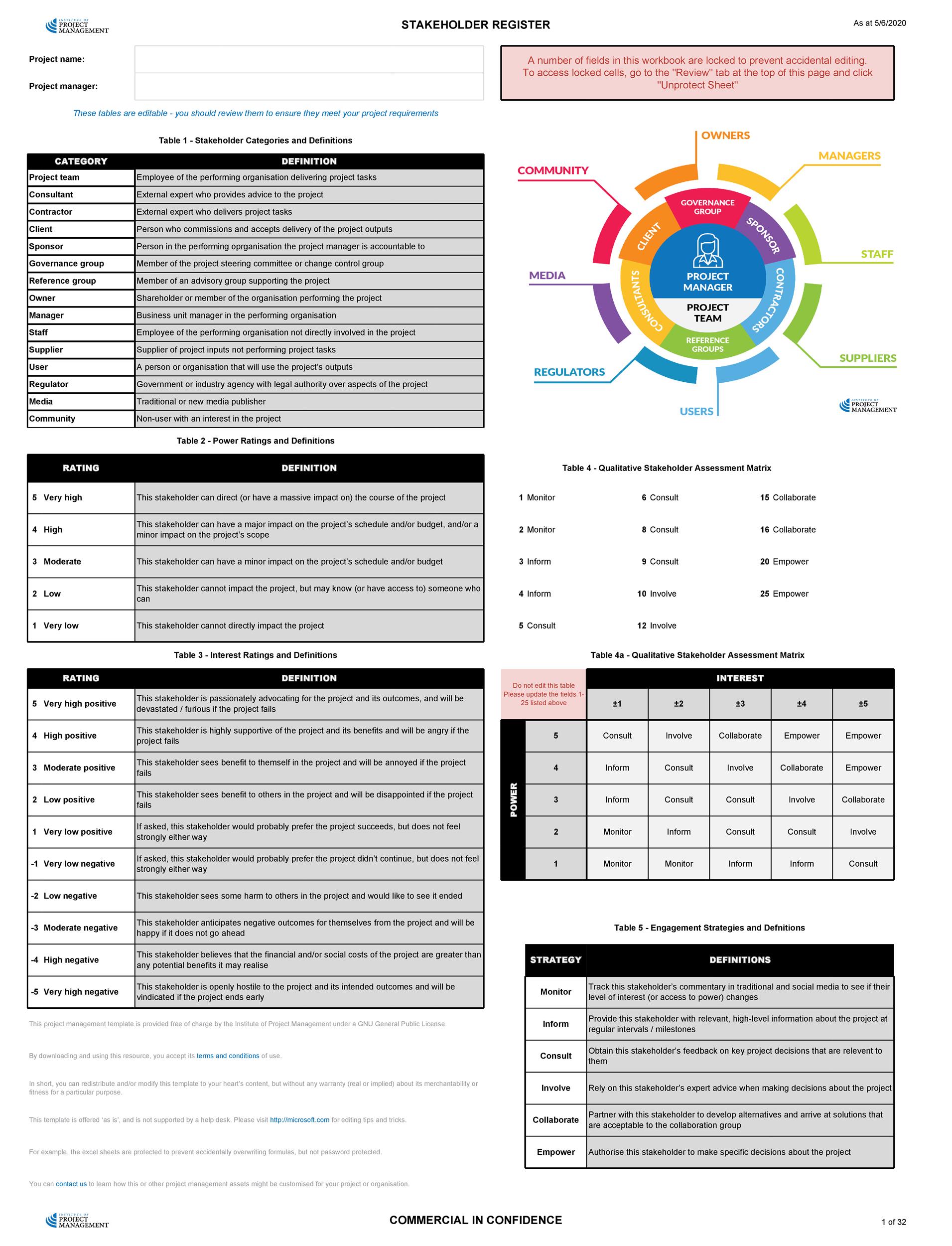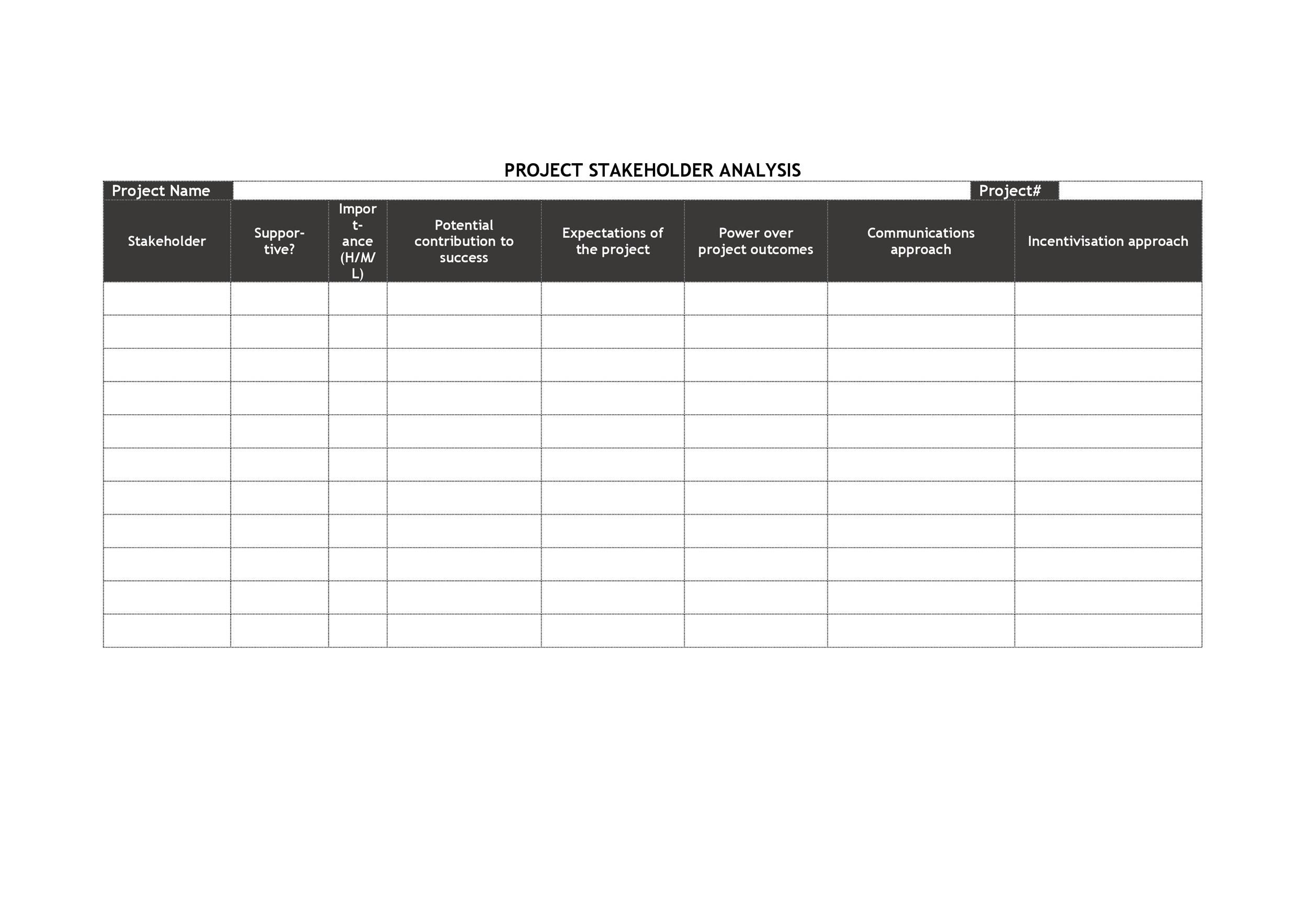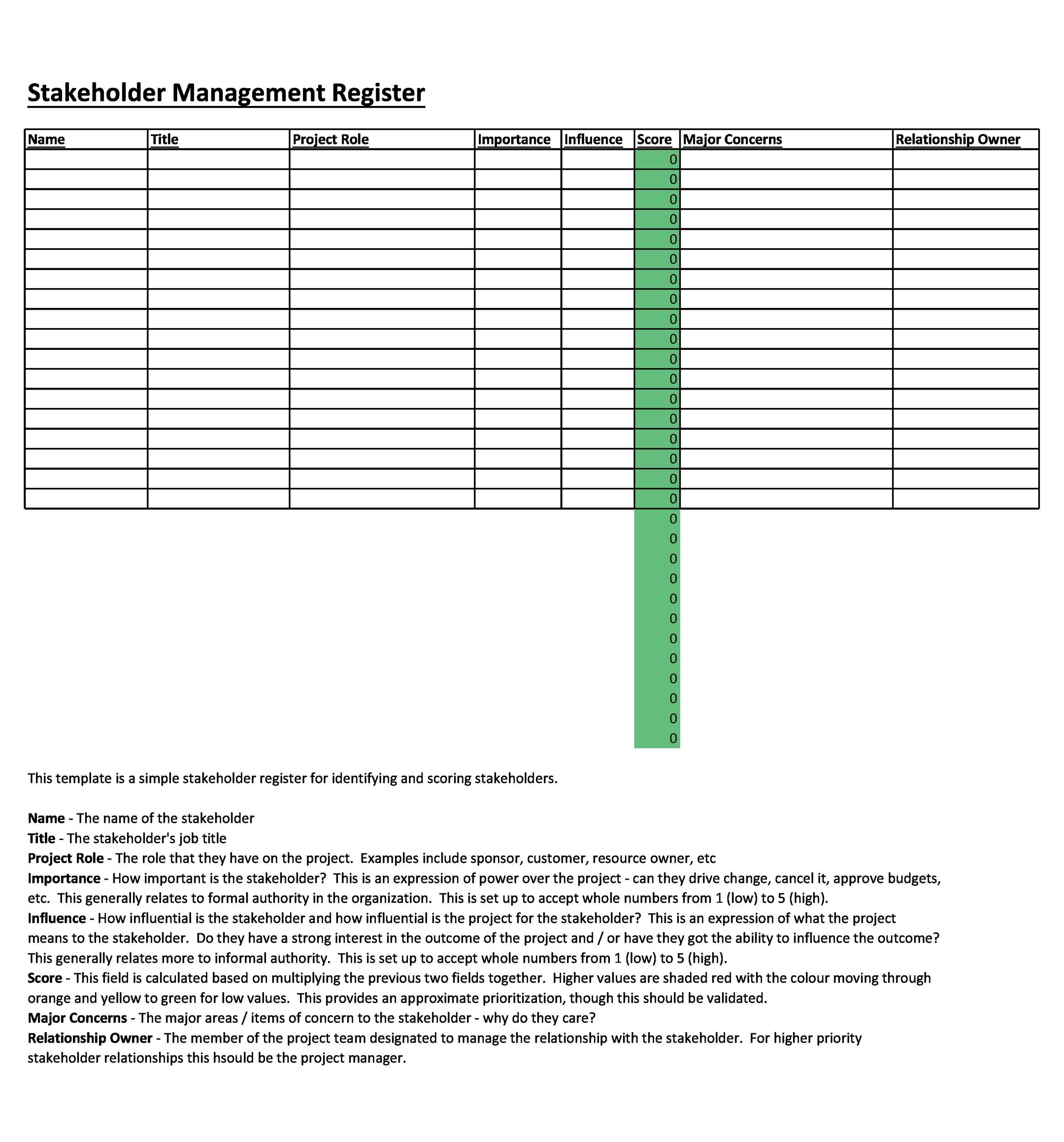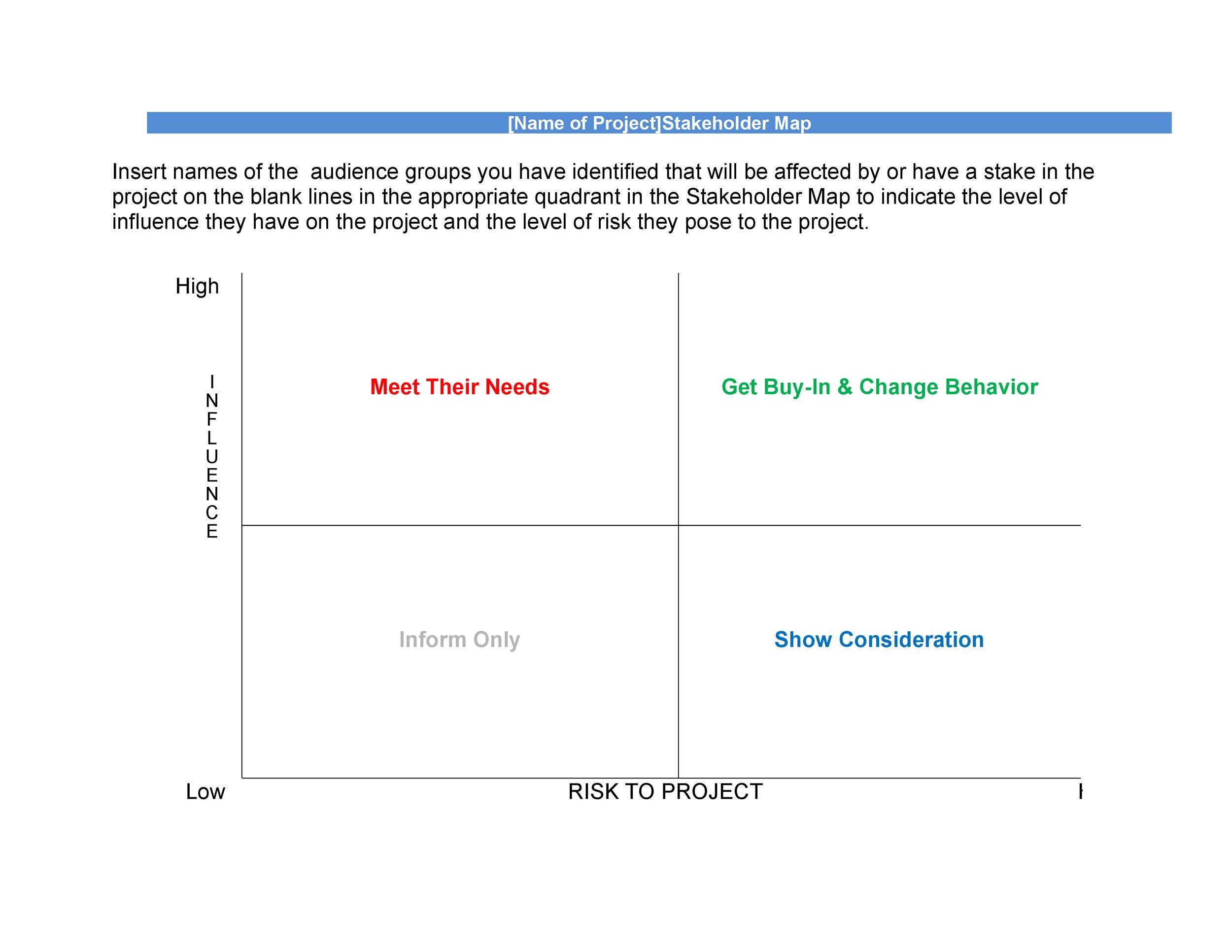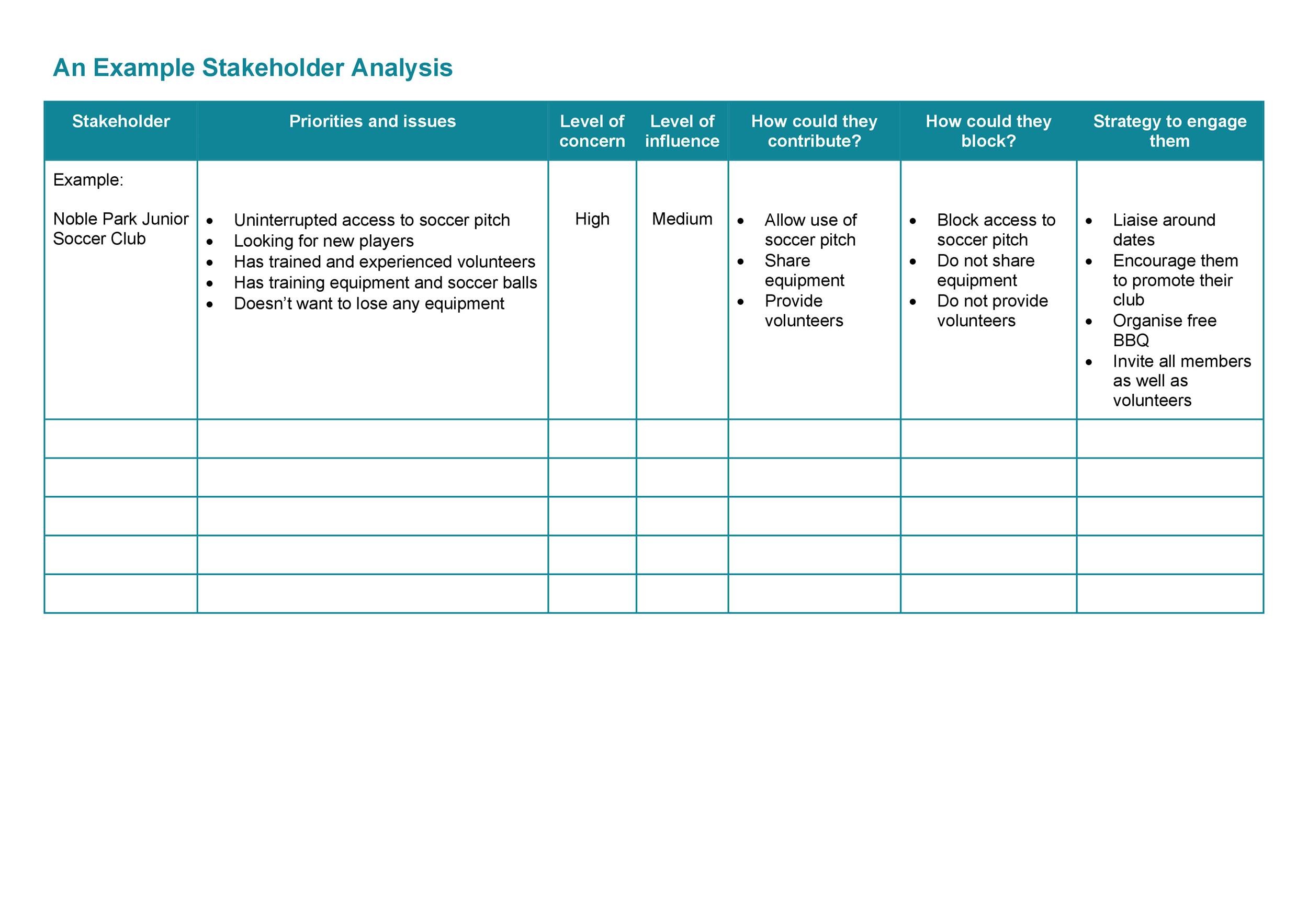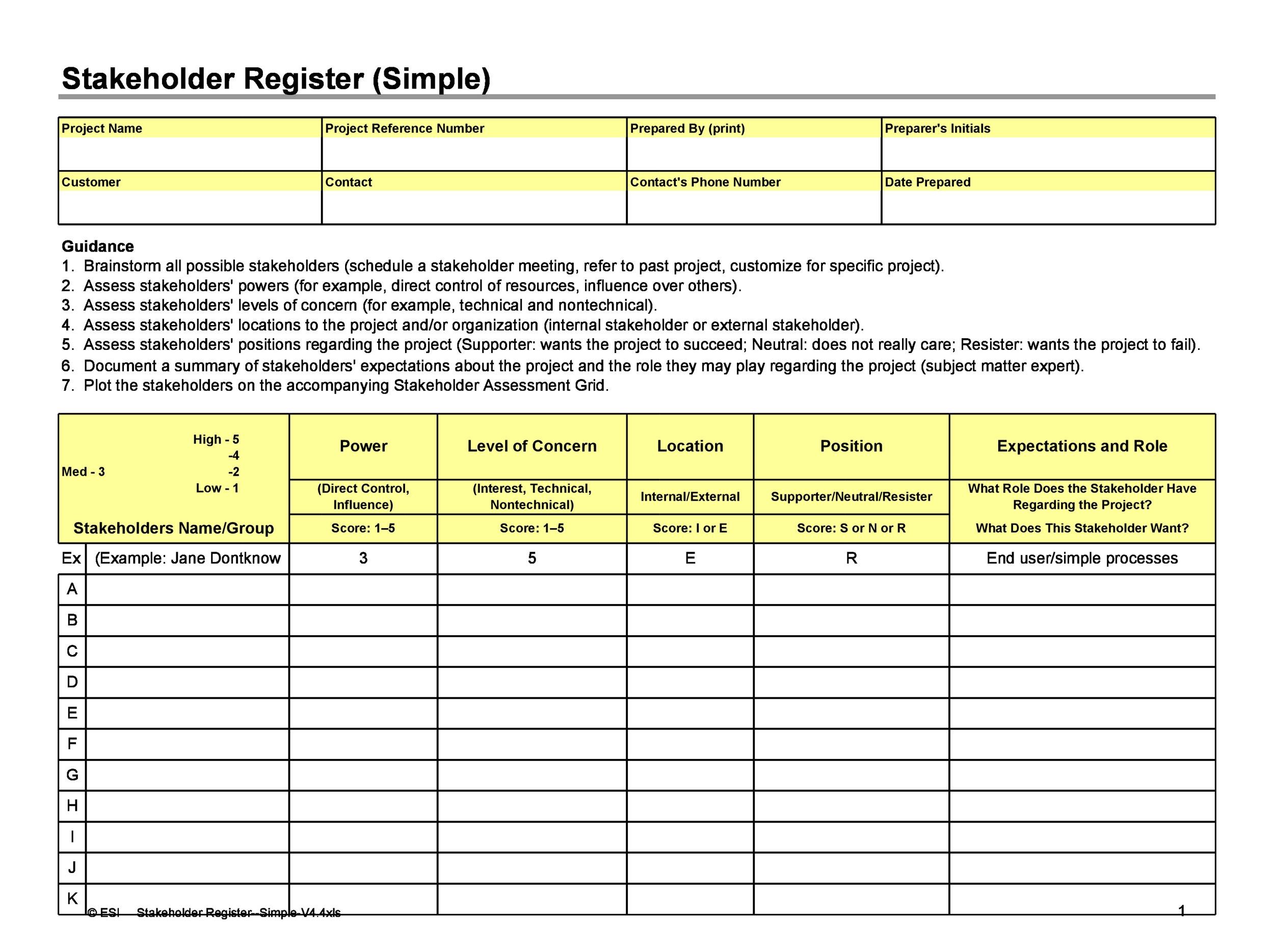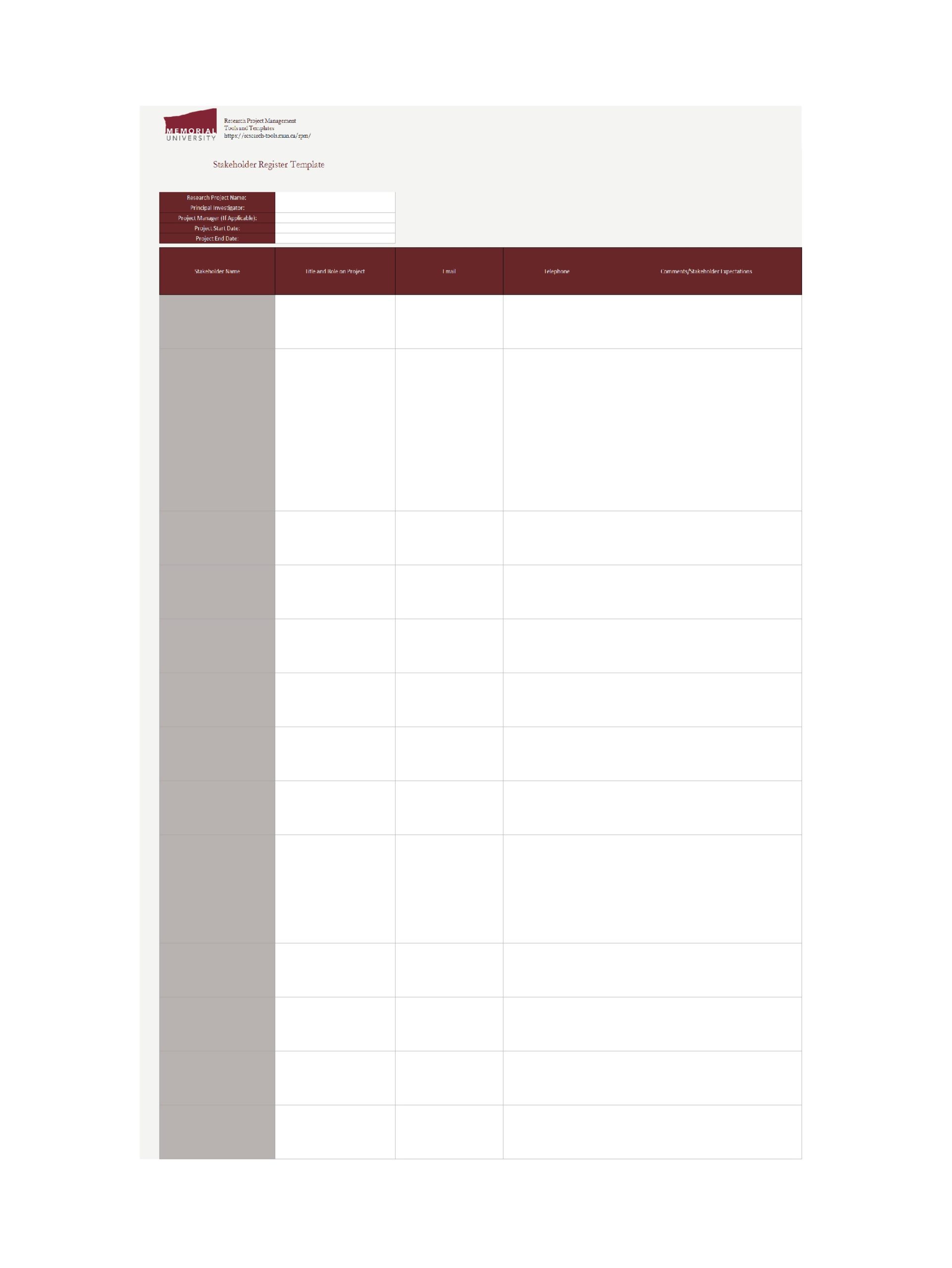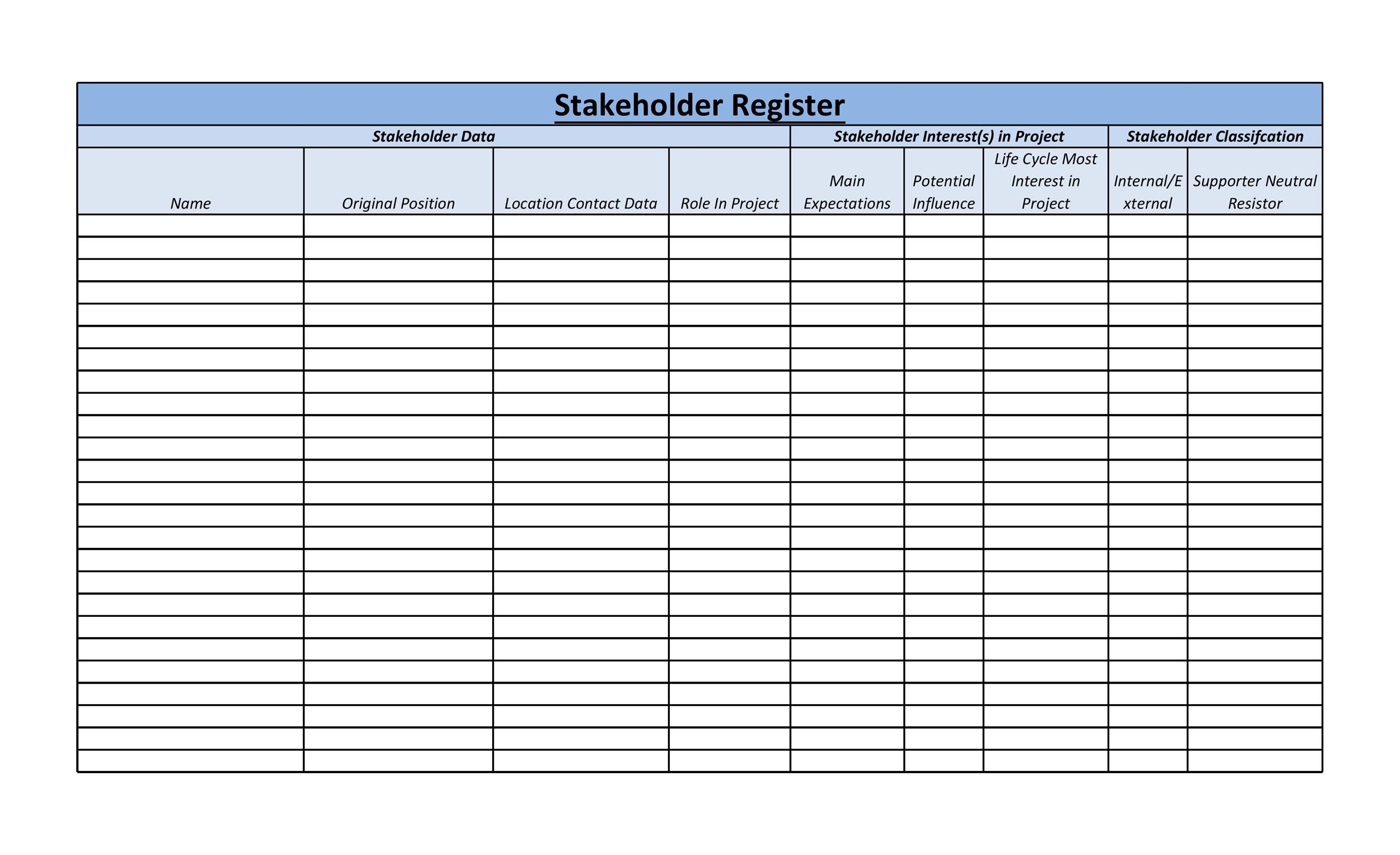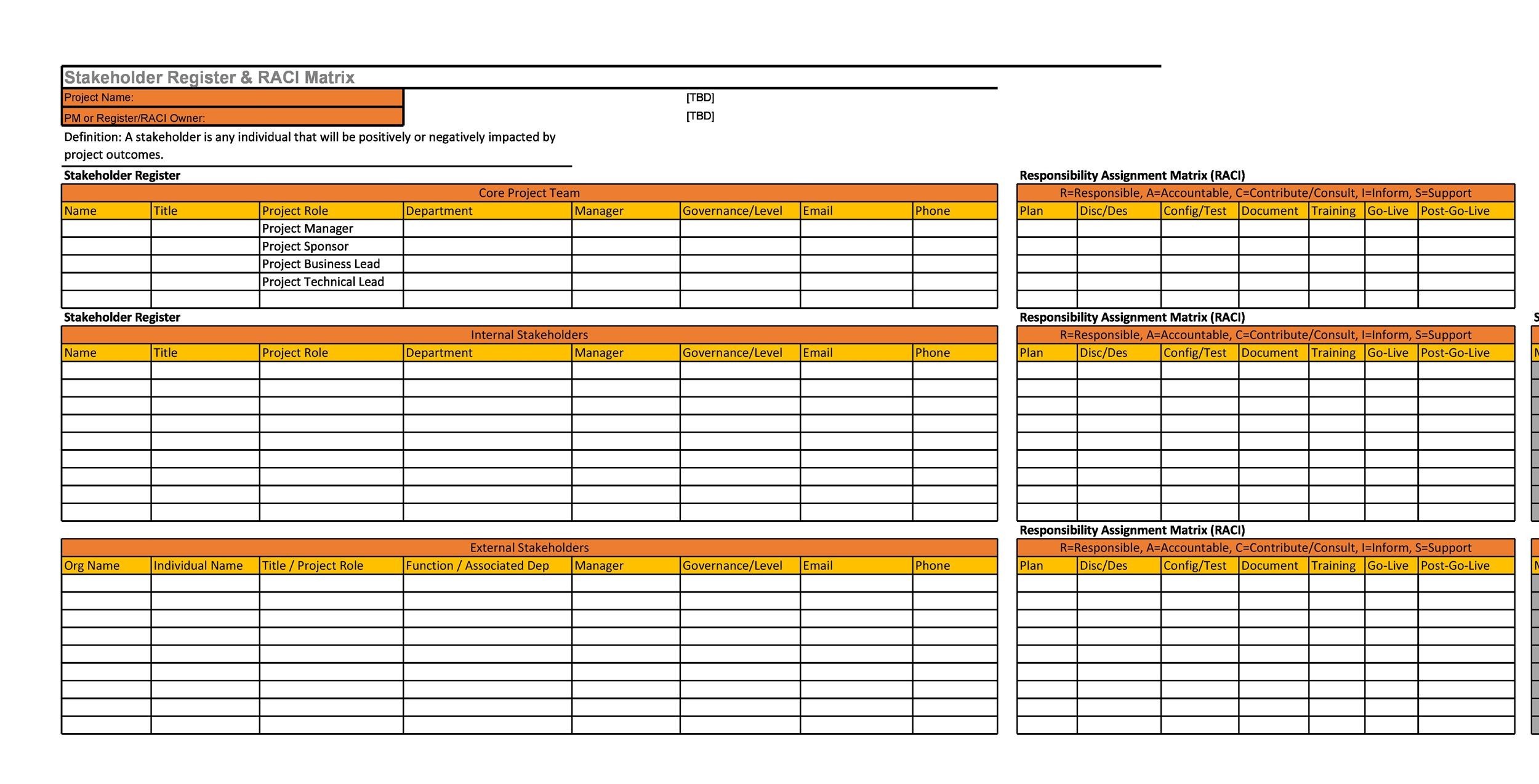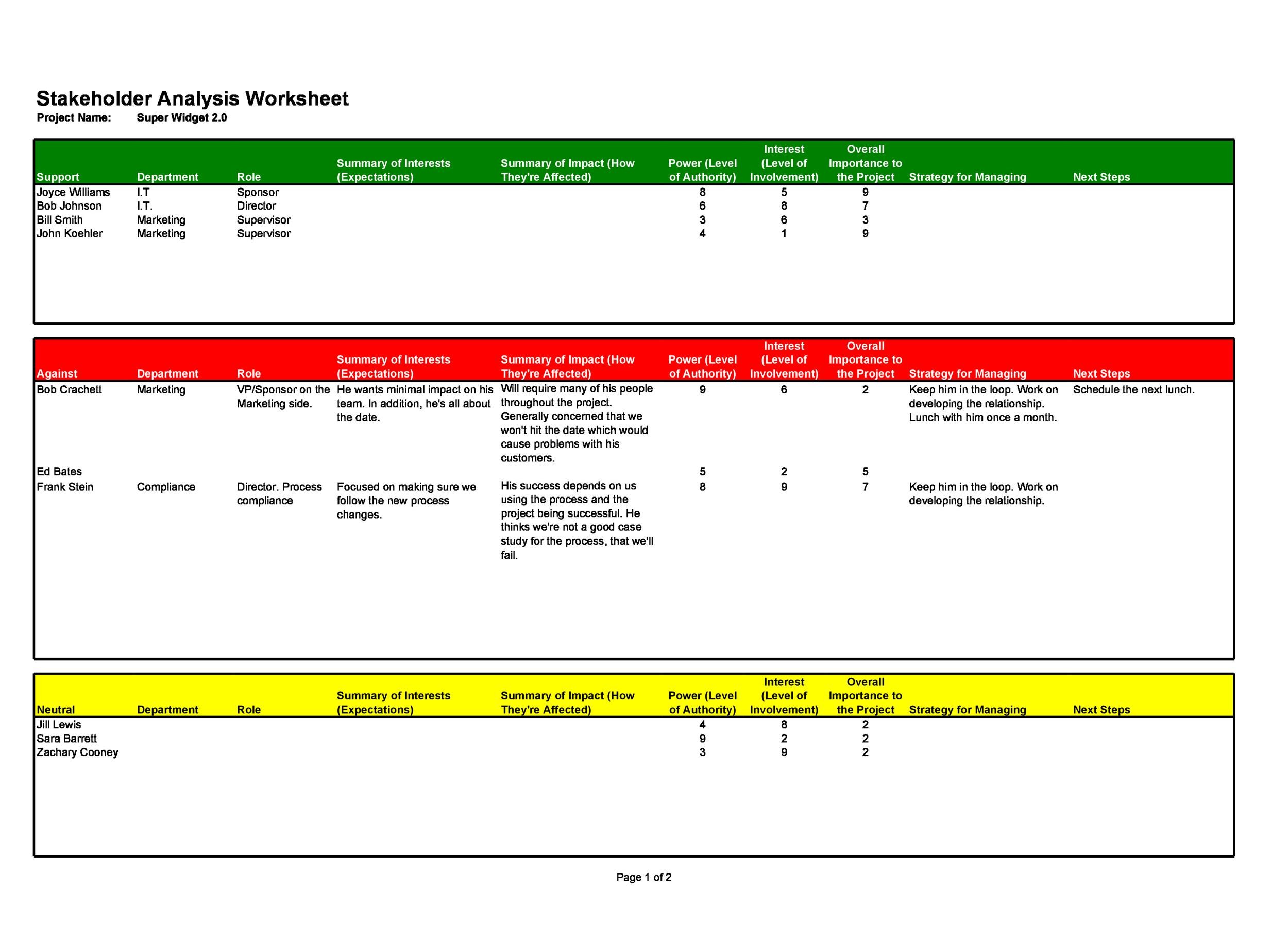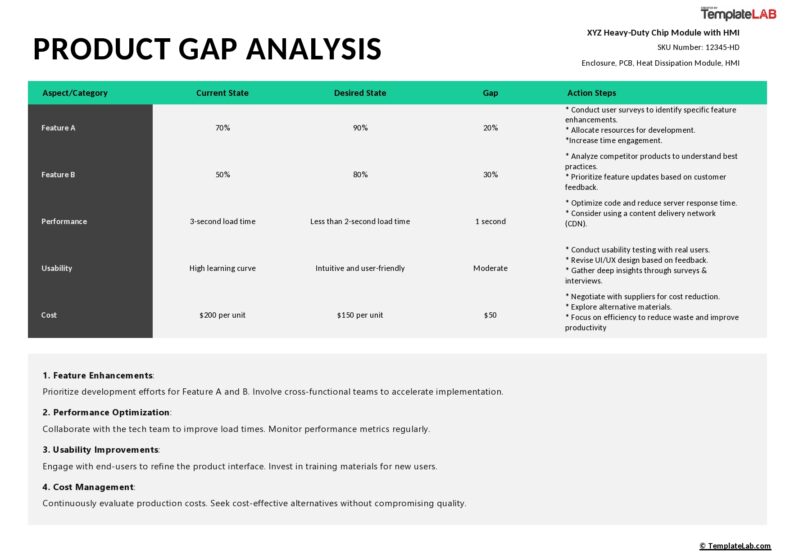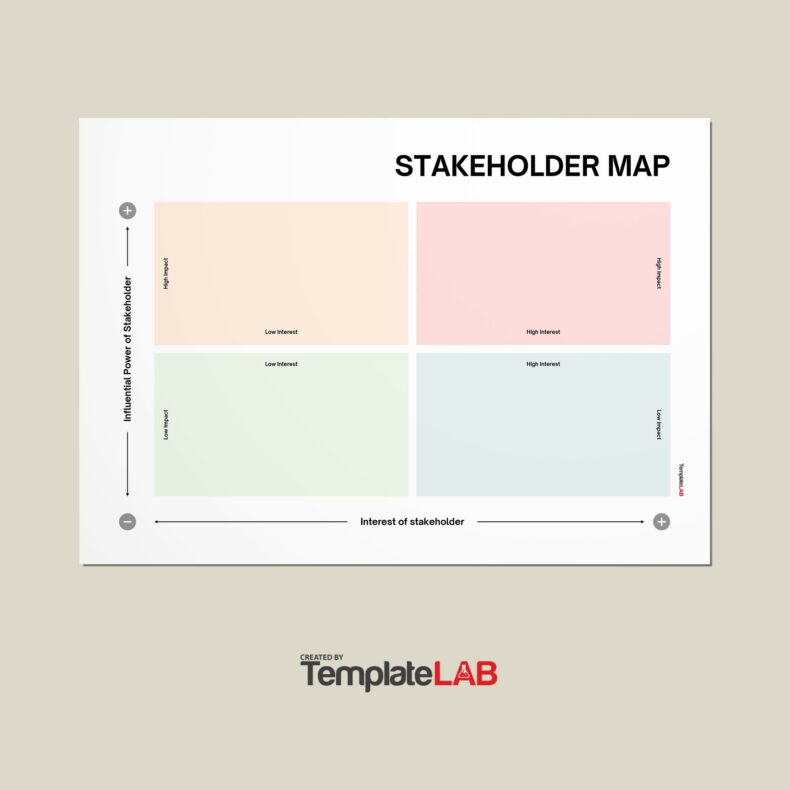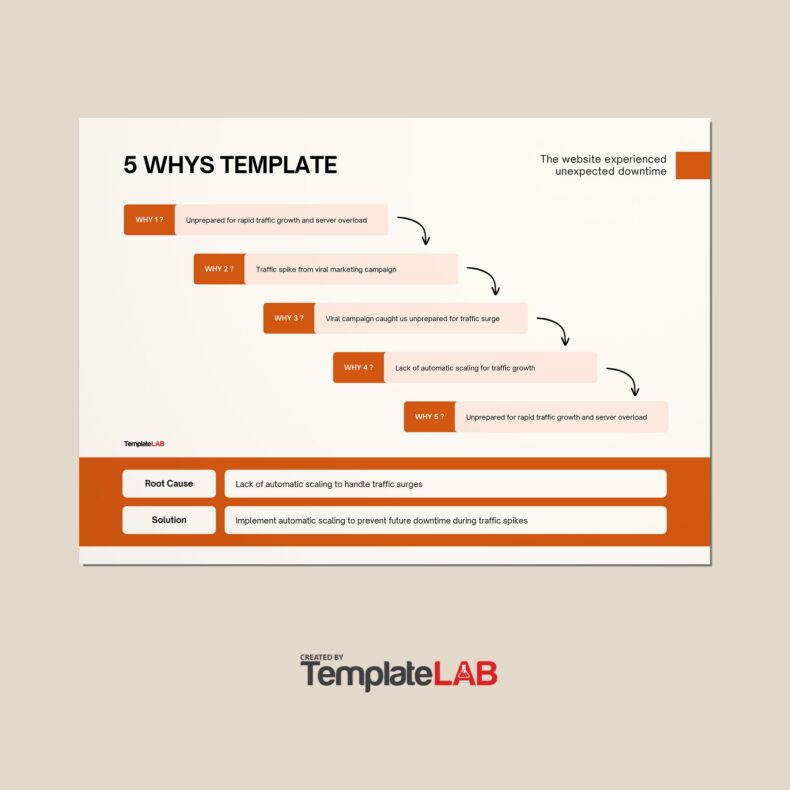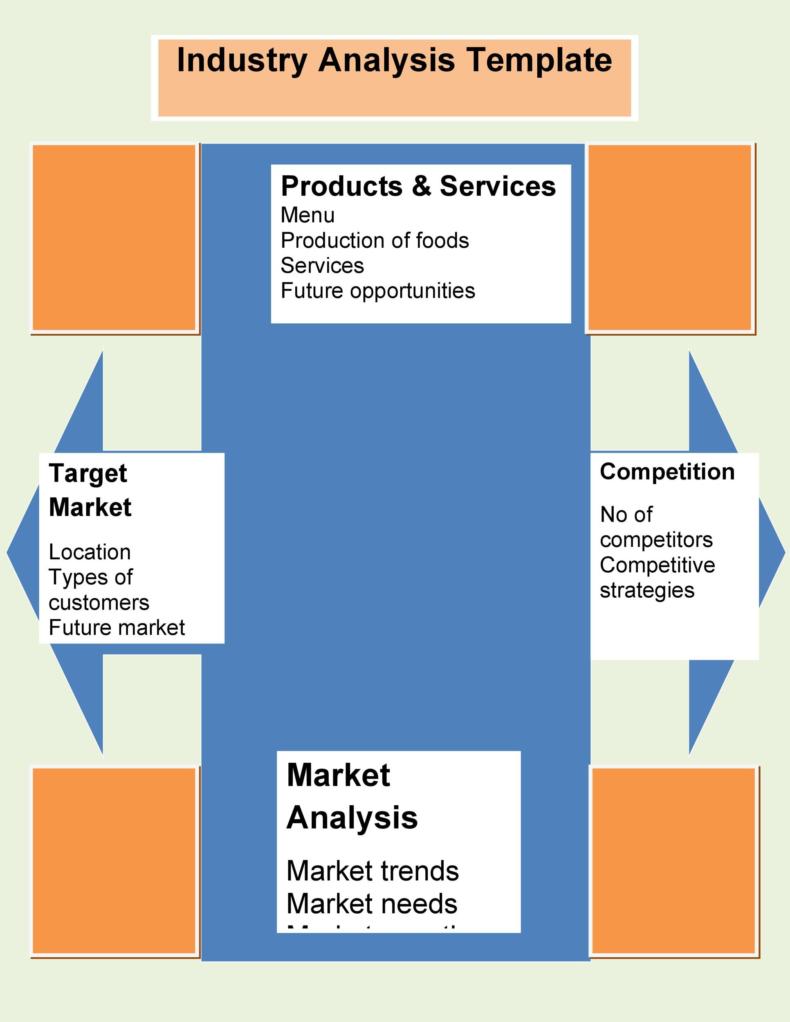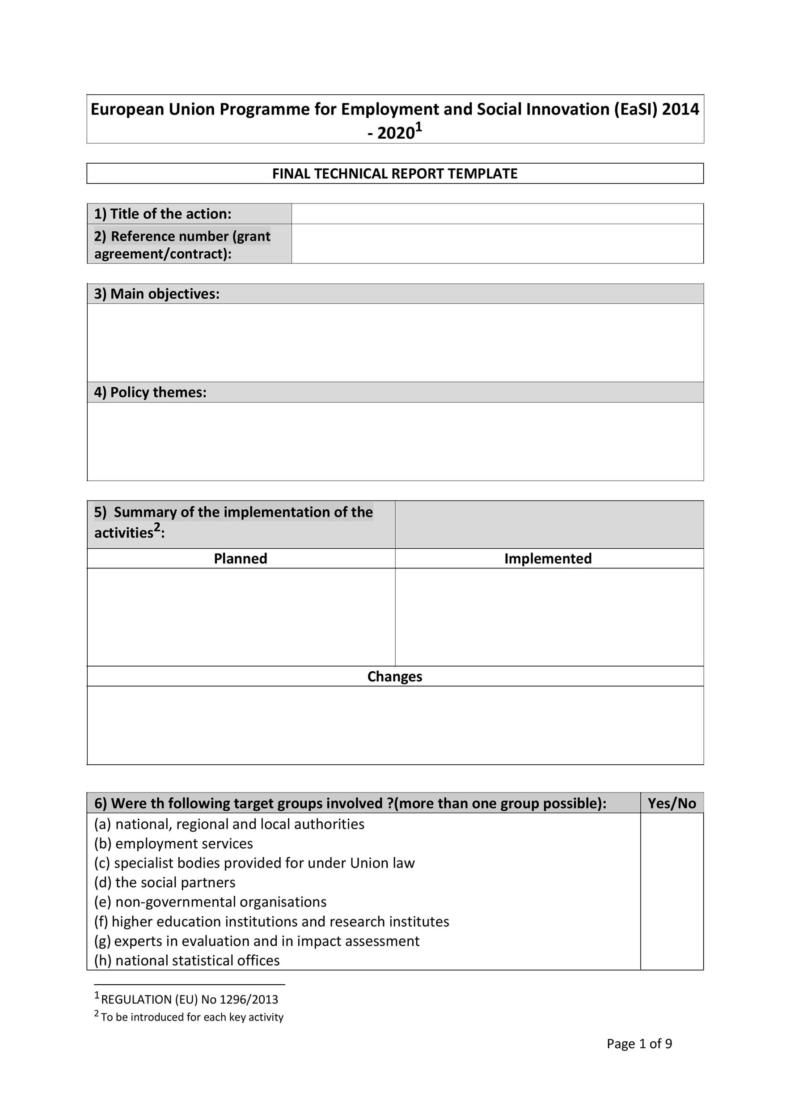In any situation requiring project planning and decision making, there is always a need for planning ahead. And when decision making involves major stakeholders in a project, there is no room for error, so planning needs to be even more thorough.
Table of Contents
- 1 Stakeholder Analysis Templates
- 2 Understanding stakeholders
- 3 Stakeholder Map Templates
- 4 How does the stakeholder analysis work?
- 5 Stakeholder Matrix Templates
- 6 The benefits of stakeholder analysis
- 7 Stakeholder Register Templates
- 8 A Step by Step Guide to Creating a Stakeholder Analysis
- 9 The different stakeholder analysis templates you can use
Because of their influence and power, stakeholders need to be catered to and kept in the loop throughout any project they’re involved in. The trouble is that handling all stakeholders at the same level can prove difficult.
That’s where a stakeholder analysis comes in. A stakeholder analysis is a visual representation of the relevance of each stakeholder on a project. Also known as a stakeholder map or stakeholder matrix analysis, the process helps managers and teams discover which stakeholders to cater to first by ranking each one according to factors such as influence and interest.
Stakeholder Analysis Templates
Understanding stakeholders
In simple definition, a stakeholder is anyone with interest in or influence over a project or its outcome. That encompasses investors, clients, and employees per department, executives, area leaders and community members. Each stakeholder needs to be kept informed about the happenings of the project, usually through a communication plan developed by the company.
Each stakeholder joins the project with their own level of influence and interest depending on their social standing, initial contribution and interest in the final product, among other factors. A stakeholder analysis uses each stakeholder’s influence and interest level to create a ranking that generates the most important stakeholder of them all.
Stakeholder Map Templates
How does the stakeholder analysis work?
Before you can develop your own stakeholder analysis, or use a stakeholder map template, you need to understand how a stakeholder analysis works.
- To create a stakeholder analysis, you need two major factors that best represent the relevance of your stakeholders to the project. The most common factors used include level of interest and level of influence, but any can be used depending on the project.
I. The level of interest is essentially how much a stakeholder cares about the final results from the project. Stakeholders that expect to benefit from a project’s final results, for example, tend to express more interest in the project.
II. The level of influence is determined by a stakeholder’s power over a project. That power can be expressed through policing, funding, networking, which also means they can boost the project or destroy it. - To start your stakeholder analysis, you need to create a matrix. The matrix is created by creating four important categories that will best judge your stakeholders’ relevance to a project. They include;
High Interest & High Influence
High Interest & Low Influence
Low Interest & High Influence
Low Interest & Low Influence - Next, you need to draw your matrix. You can create a simple matrix by dividing one square into four smaller squares.
- Next, assign each of the above categories to a box of its own.
- Proceed to add each stakeholder into the box where they belong, depending on your assessment of their individual levels of influence and interest in the project. Use the category definitions below for your assessment.
High Interest & High Influence – Those stakeholders who can make or break the project, and are highly interested in its final outcome.
High Interest & Low Influence – Those stakeholders who are highly vested in the project and its outcomes but can’t do much to affect it.
Low Interest & High Influence – Those stakeholders that aren’t actively engaged or interested in the project but have the power to affect how it turns out.
Low Interest & Low Influence – Those who’s participation is the least crucial to the project. They might only be participating for a short while or contributing little to the project’s survival. Their interest in the project is low.
Stakeholder Matrix Templates
The benefits of stakeholder analysis
Judging by its popularity among companies and other entities as a decision-making tool, a stakeholder analysis or stakeholder map must come with a number of benefits. Some of them include:
- Helps identify key stakeholders before it’s too late
Every project has key, high priority stakeholders, and they need to be identified early on in the project’s development to effectively leverage their influence and power. While most stakeholders of this nature are easy to identify, others such as ‘communities to be affected’ or ‘employees’ aren’t always so simple to identify at the beginning.
By identifying how crucial each stakeholder group is to the project, sidelining potential key players is averted early in time, along with the negative effects that could have triggered down the line. - Is crucial in averting the risks associated with unhappy stakeholders
One of the biggest reasons why companies use stakeholder maps is because they help weed out stakeholders that are likely to be overlooked throughout the project. They might not be the most crucial stakeholders to the project, but the stakeholder matrix helps identify where their influence on the project is most effective, thereby helping companies can plan ahead. - Helps companies create sound communication plans for the project
Through its matrix tool, the stakeholder map identifies the stakeholders that will require the most attention and those that will require minimal interruption. For the people crafting the company’s communications plan, this helps know who to be in contact with most, judging by their influence, interest and level of support, such as the investors. - Guides company executives on appropriate resource allocation as regards managing stakeholders
Much like with the generation of a communication plan, the stakeholder map is a good reference when allocating resources to be used on keeping each stakeholder in the loop as the project grows. For context, stakeholders falling under the ‘Manage’ category can be allocated way more resources than those under the ‘Inform’ categories.
Stakeholder Register Templates
A Step by Step Guide to Creating a Stakeholder Analysis
A Stakeholder Analysis is an important process that needs to be handled carefully. If you prefer to start your stakeholder mapping process from scratch, rather than use stakeholder map templates or stakeholder matrix templates, you will need a guide. Below are some of the steps you need to follow when creating the perfect stakeholder analysis.
Quick Note: The analysis can be carried out by one individual or by a group of individuals together broken into groups.
- Identify every stakeholder
The first step is to identify every possible stakeholder to the project. As noted above, a stakeholder is anyone with an interest in or influence over a project and its outcomes. A stakeholder can also be someone affected by the project and its outcomes. - Separate the stakeholders into groups
After identifying all possible stakeholders’ names, proceed to cluster them into groups based on their stakeholder position. You can use the following factors to identify which group each individual falls under:
Their level of influence over the project
Their skills and capabilities as regards the project
Their role in the existence of the project
How or if they will be affected by the project
Most projects have stakeholders falling under the broad categories below;
Investor/Owner
Employees and Executives
Suppliers and Competitors
Customers/Clients
Affected and nearby communities
Regional government authorities - Prioritize each stakeholder
While one project can have over five groups of official stakeholders, not all of them can be considered high priority. That’s why prioritizing each stakeholder according to their relevance on the project forms a crucial part of the stakeholder analysis process.
This process is completed using the stakeholder matrix. Many companies buy stakeholder matrix templates from the internet for this process, but you can always create a simple one of your own. As shown earlier, the matrix separates every stakeholder by using a set of factors, such as level of interest and level of influence.
At the end of the process, the matrix should feature all stakeholders under four groups:
those to manage
those to satisfy
those to monitor
those to inform - Gauge each stakeholder’s level of support
After identifying which stakeholders you’ll need to manage, satisfy, monitor loosely or inform once in a while, you’ll need to iron out a few extra kinks. By identifying the level of support (or the opposite of support, conflict), you can also identify which stakeholders will require extra effort during decision making and those that will be easy to deal with. Gauge the level of support using a ranking system for each of the four sections. - Plan a way forward and make a final report
The stakeholder mapping process above should give you a few answers on where your project stands as regards its stakeholders. By the end of the exercise, you will know which stakeholders to give extra attention (usually the stakeholders in both the ‘manage’ and ‘conflict’ categories).
Note: As projects evolve and grow, stakeholder influence and interest is subject to change. In other words, you will need to carry out the stakeholder mapping and analysis process from time to time. If you’re using stakeholder map templates, you can always edit any information quickly as it changes.
The different stakeholder analysis templates you can use
If you’re going to be developing your company’s stakeholder analysis, you can consider using a template to ease the process. Designing your own matrix isn’t so hard, but using a template is way easier. Besides, there are lots of template options to choose from, including;
- The Stakeholder Analysis Matrix Template
- The Stakeholder Register Template
- The Stakeholder Strategy Template
- The Stakeholder Management Plan Template
- The Stakeholder Communications Plan Template

